Astrophotographers, ready your cameras. On Friday morning, February 3rd, Comet Garradd (C/2009 P1) will pass approximately 0.5 degrees from globular cluster M92 in Hercules. Last night, Rolando Ligustri took this picture of the converging pair using a remotely-controlled 106mm telescope in New Mexico:
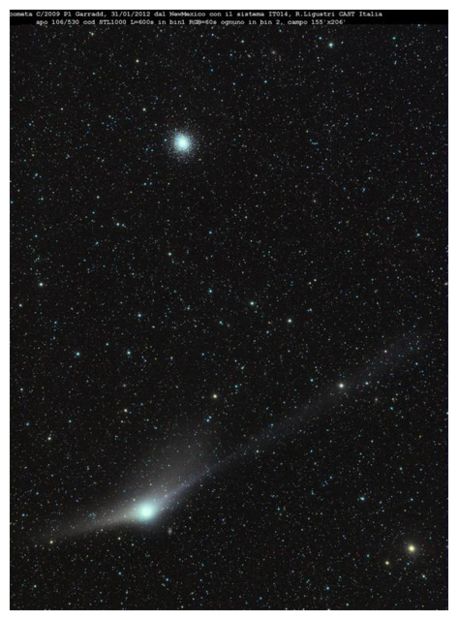 The ten minute exposure shows the comet's fan-shaped dust tail, which roughly traces the comet's orbit, and its pencil-thin gas tail, which points almost directly away from the sun due to the action of the solar wind.
The ten minute exposure shows the comet's fan-shaped dust tail, which roughly traces the comet's orbit, and its pencil-thin gas tail, which points almost directly away from the sun due to the action of the solar wind.
The star cluster and the comet are both located in the constellation Hercules, high overhead in northern hemisphere skies before sunrise. Sky and Telescope offers a sky map of the comet's path. Observers with computerized GOTO telescopes can track the comet by plugging in orbital elements from the Minor Planet Center.
At the moment, Comet Garradd has an astronomical magnitude of +6.5, invisible to the naked eye but an easy target for backyard telescopes. Forecasters expect it to brighten by a factor of ~2 in the weeks ahead as the comet approaches Earth for a 1.3 AU close encounter in early March. This could be a good time to invest in a Comet Hunter.
More Images:
From Lorenzo Comolli of Bogli, Italy; from Gregg Ruppel of Ellisville, MO; from Mike Broussard of Maurice, Louisiana; from Dr Paolo Candy of Ci.A.O. Cimini Astronomical Observatory - Italy
An expert on astronomy says the glowing fireball that some Halifax residents saw streaking through the sky Thursday night was probably a meteor.
Alan Strauss at the Mount Lemmon Sky Center in Arizona says these spectacular fireballs are quite common.
However, Strauss says people often miss them because they just don't look up that much.
The fiery object appeared to travel from west to east over the Halifax area at around 9:30pm.
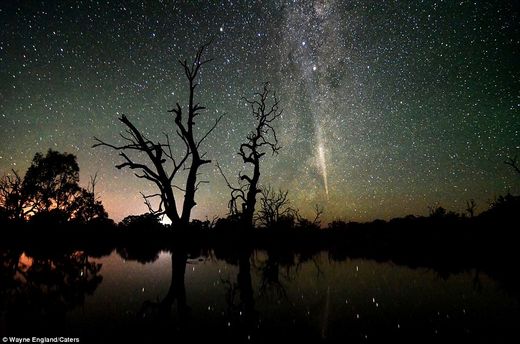 This is the out-of-this world photograph of the beauty of an amazing comet streaking across the cosmos.
This is the out-of-this world photograph of the beauty of an amazing comet streaking across the cosmos.
Caught on camera over a swamp in Australia the stunning image shows the trail of the Comet Lovejoy as it passed close to Earth.
Lying in wait in the darkness in Poocher Swamp Game Reserve near Adelaide, was photographer Wayne England who took this amazing snap.
As his picture shows the darkness of the swamp and the reflection of the water made the perfect backdrop to reflect the comet zooming across the sky.
Mr England, 40, who is a member of the Astronomical Society of South Australia, said he first heard about the comet travelling close to Earth in December and had several nights to try and catch a glimpse at 4am in the morning on Christmas Eve.
He said: 'Each night I travelled 6miles out of the town to my favourite site, Poocher Swamp Game Reserve because of the dark sky, water and reflections of the stars in them water.
'The comet looked amazing when I first saw it on the morning of Christmas Eve. It was so bright and large in the pre-dawn sky.
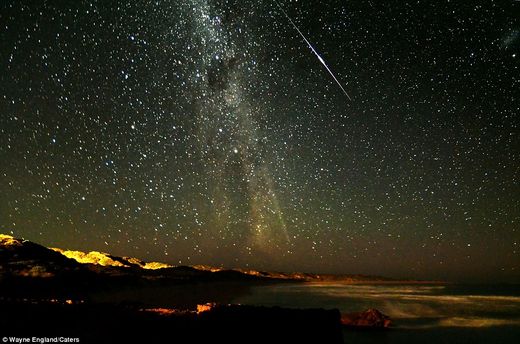
'It had two tails, one curving slightly away from the other at the top. It was like a beacon or a laser shooting up into the sky.
'I'm so glad I saw it when it was so bright and on subsequent nights because it faded fast over several days.
'This was of course the best time to take photos of it and because it was moving relatively fast - you could see the amount it had moved each night.'
Wayne used a Nikon D7000 with a Tokina 12-24mm lens with settings of ISO 3200 or 6400, 20-30secs exposure at f/4.
He said: 'I like the wide angle this lens produces and with it I often try to get reflections of the stars in the water, which to create a good effect can only be done with wider angle lenses.
'The comet was initially visible just before sunrise but by the New Year it was visible from about 1am but had faded considerably.
Witnesses spotted it from Oklahoma City to south of Waco
At about 8 p.m. on Wednesday night, a meteor zipped across the sky over Dallas, then burst into a streaking flame before burning out.
WFAA received more than 200 reports, and a Federal Aviation Administration spokesman confirmed that it was likely a meteor or meteorite. Sightings extended from as far north as Oklahoma City to south of Waco. Some heard a boom. On its Wednesday night broadcast, CBS 11 described it as an "electrophonic" meteor -- one that can be heard as it burns.
Comments on WFAA's Facebook page came from The Colony, Rockwall, and beyond, each describing it slightly differently: as a "large blue and green ball with a orange tail," as "bright green," and as "real bright blue with a long fire trail behind it."
I actually saw it as it burned out. In what was undoubtedly an optical illusion, it looked like it was coming from south of downtown Dallas and moving in a northeast direction, as if headed for White Rock Lake. I happened to be watching a performance online by Bjork from Tuesday night's The Colbert Report. She sang "Cosmogony," a song from her new album Biophilia and I was trying to figure out the lyrics.
The song, coincidentally -- or not?! -- is about the creation of the universe:
Comment: Here's a closer view of the fireball:
Wichita, Kansas - If you saw an unusual bright light moving across the sky Wednesday night, chances are, you were looking at a meteor.
A patrol car dash camera in northern Texas captured the falling meteor as it was streaking across the sky around 8 p.m. Wednesday night.
"There was a bright light that was seen in the sky from Wichita through Oklahoma and down into Texas," said director of Lake Afton Observatory, Greg Novacek.
Traveling anywhere from ten to forty miles per second, he estimates it landed in Texas, just south of Waco.
"There was actually a sonic boom heard near Waco from the meteor," said Novacek.
While most meteorites are never found because they land in the ocean, Kansans seem to stumble upon the space rocks more often than others.
"Kansas actually ranks second in the U.S. for recorded meteorite falls and the only state ahead of us is Texas," said Wichita Meteorite Society Founder, Jerry Calvert.
That is because farmers plow up much of the state, exposing the meteorites.
"They claim that every square mile of the earth has a meteorite on it, at least one meteorite , so the trick then comes how you can actually identify them," said Calvert.
"The best way to check is to get a magnet, and if it sticks, chances are you've found a meteorite," said Novacek.
Meteorites hit earth about once a day, people just usually do not notice them.
Comment: That's a version of 'nothing-to-see-here-folks' we haven't heard before! We here at Sott.net sure notice 'em!
This hit Canada the following night: Halifax 'fireball' probably a meteor
It is true however, that the vast majority aren't paying attention...
What makes Wednesday night's meteor so special is the fact that people actually saw it, thanks to clear, dark skies, timing, and location.
If you spot a meteor the size of Wednesday night's, you will have about twenty seconds to notice it, whereas a shooting star burns out within about two seconds.
Comment: Exactly, then what??
It's not big kick-ass asteroids we need to be thinking about. It's the possibility of micro-meteorites and cometary dust bringing all sorts of chaos people in the modern era haven't seen before.
New Light on the Black Death: The Cosmic Connection
Cbet nr.3010, issued on 2012, February 03, announces the discovery of a new comet (discovery magnitude 18.5) by R. E. Hill on CCD images obtained on February 01.4, 2012 taken with the Catalina Sky Survey's 0.68-m Schmidt telescope. The new comet has been designated P/2011 VJ5 (LEMMON).
T. Spahr, Minor Planet Center, noted that this object appears identical to an apparently asteroidal object discovered by the Mount Lemmon Survey on Nov. 3 (observer R. Kowalski; discovery observations tabulated below) and then designated 2011 VJ5.
We performed some follow-up measurements of this object, while it was still on the neocp. Stacking of 8 R-filtered exposures, 30-sec each, obtained remotely, from the Haleakala-Faulkes Telescope North on 2012, Feb.1.6, through a 2.0-m f/10.0 Ritchey-Chretien + CCD, under good seeing conditions, shows that this object is a comet: compact coma nearly 3" in diameter with a sharp central condensation, and a tail about 20" long in PA 292.
Our confirmation image below.
M.P.E.C. 2012-C14 assigns the following preliminary orbital elements to comet P/2011 VJ5: T 2011 Dec. 8.7; e= 0.55; Peri. = 315.12; q = 1.50 AU; Incl.= 3.97
Cbet nr. 3012, issued on 2012, February 04, announces the discovery of a new comet (discovery magnitude 18.3) on CCD images taken with the 0.45-m f/2.8 reflector at La Sagra, Spain on January 29.1, 2012. The apparently asteroidal object was later noted by Jaime Nomen on La Sagra images taken on Jan. 30.2 to be a possible comet with slight diffuseness. The new comet has been designated C/2012 B3 (LA SAGRA).
We performed some follow-up measurements of this object, while it was still on the neocp. Stacking of 10 R-filtered exposures, 20-sec each, obtained remotely, from the Haleakala-Faulkes Telescope North on 2012, Jan.30.6, through a 2.0-m f/10.0 Ritchey-Chretien + CCD, under good seeing conditions, shows that this object appears "soft", compared to the nearby field stars of similar brightness (stellar FWHM of 1.2").
Our confirmation image:
M.P.E.C. 2012-C23 assignes the following preliminary parabolic orbital elements to comet C/2012 B3: T 2011 Nov. 29.91; e= 1.00; Peri. = 49.22; q = 3.52 AU; Incl.= 106.85
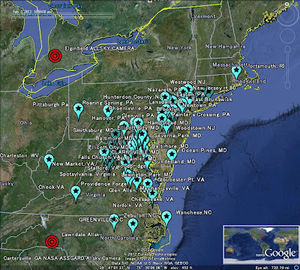 More than 100 people from New Jersey to North Carolina reported seeing a bright streak of light with a tail shooting through the night sky late Friday.
More than 100 people from New Jersey to North Carolina reported seeing a bright streak of light with a tail shooting through the night sky late Friday.
"It looked a lot brighter than a shooting star," German Osorio wrote on InsideNova.com's Facebook page. "Maybe only a few hundred feet up and it had that color that propane gets when it burns."
Kseniya Ledbetter of Fairfax said she spotted the fireball as she drove along Braddock Road east of Va. 28 around 10:15 p.m. "The most beautiful thing I ever saw! It was changing colors and then went out right above Hampton Chase neighborhood."
NASA, the FAA and the National Weather Service have yet to weigh in on the sky phenomena, but the website "The Latest Worldwide Meteor/Meteorite News" had more than 100 posts Saturday about the fireball from people in Virginia, New Jersey, New York, Maryland and North Carolina.
The American Meteor Society had 56 reports of a fireball sighting, again from New Jersey to North Carolina. Most reports came from Virginia and Maryland.
"Big and blue with a red tail. Looked like a meteor to us," Jessica Guido of Stafford wrote on our Facebook page.
Witnesses reported seeing the fireball between 10 and 10:30 p.m. All described it as very bright and very low.
"It was awesome, bright as could be with a hint of blue green," wrote Michele Janke, who saw the fireball along Prince William Parkway.
According to the American Meteor Society, fireballs are very bright meteors, about as bright as Venus in the morning and evening skies. About 10 to 15 meteorites fall to Earth each day, but sighting are rare since streaking fireballs often fall over the ocean, or during daylight hours when they can't be seen.
Comment: If sightings are so rare, why has SOTT.net collected eight reports of fireballs in the past week alone?
Fireballs are sometimes accompanied by sonic booms, as happened in Texas on Wednesday.
More than 200 people from Texas to Oklahoma reported a streaking fireball that night. A dash-mounted camera in a police cruiser captured the meteor's descent. Many also reported a loud boom as the fireball approached the ground. Watch the video here, courtesy of WFAA TV in Dallas-Forth Worth.
Comment: Reports of fireball with huge tail seen over Western Australia
Huge Fireball Over Tokyo, 2 February 2012
Fireball Photographed Over Corfu, Greece
Russia: Something fell from the sky in the village of Novobureysk
US: Wednesday night's Texas meteor so bright it was seen in Kansas
Canada: Halifax 'fireball' probably a meteor
Rhode Island, US: Extremely bright 'unexpected' meteor caught on camera
The photo above showing a startling fireball appearing to rip apart the night sky was seen during a star observation session at Mount Pantokrator on the Greek island of Corfu. I had set my camera up to get a picture of our small group and before long this brilliant meteor lit up the surrounding landscape. It was approximately -8 magnitude or about 25 times brighter than Venus at its brightest -- so bright that we were bathed in a sea of blue-green light. You can see the reflection on my 16 in (41 cm) telescope, on the table at right-center and on the side of my car. Click here to see a short animation.
Photo details: Canon EOS 40D camera; 15mm fisheye lens; f/2.8; ISO 800; 30 second exposure; Photoshop; Cropped.
Huge Fireball Over Tokyo, 2 February 2012
5 Feb 2012: 'sas' Perth - 01.10am 10 sec. Australia - Yellowish huge yellowish shooting star not that I saw. No photo
5 Feb 2012: 'Rhett' WA Kalgoorlie - 1:05:00 15 seconds. N-S, Green As the moon N/A I've never see anything like it, it had a huge tail.
5 Feb 2012: 'dan' perth, WA, Australia - 1:18 15 seconds. N-S, orange, blue, yellow brighter than moon, larger than moon none massive, bigger than moon.
5 Feb 2012: 'Tara Isaac' Perth, Western Australia - 01.10 hours approx 20 secs. E-W, Large, bright green fiery head, long white tail. Brighter than Venus. No photo, seen while driving freeway North
Comment: Our immediate cosmic environment IS probably littered with junk left there by certain governments who live by the maxim that the means justify the ends. But it is the height of denial to buy into the notion that all these reports of fireballs we've been collecting are man-made objects. This 'space junk' theme is starting to smell strangely like 'anthropogenic global warming', which provides a plausible - but 'not even wrong' - cover story for Earth changes.
Forget About Global Warming: We're One Step From Extinction!
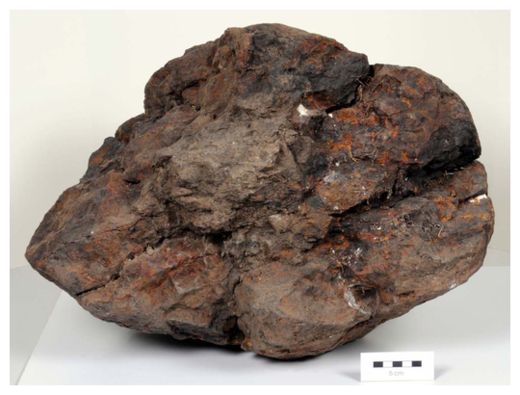
With a weight that rivals a baby elephant, a meteorite that fell from space some 30,000 years ago is likely Britain's largest space rock. And after much sleuthing, researchers think they know where it came from and how it survived so long without weathering away.
The giant rock, spanning about 1.6 feet (0.5 meters) across and weighing 205 pounds (93 kilograms), was likely discovered by an archaeologist about 200 years ago at a burial site created by the Druids (an ancient Celtic priesthood) near Stonehenge, according to said Colin Pillinger, a professor of planetary sciences at the Open University.
Pillinger curated the exhibition "Objects in Space," which opens today (Feb. 9) and is the first time the public will get a chance to see the meteorite. The exhibition will explore not only the mystery that surrounds the origins of the giant meteorite, but also the history and our fascination with space rocks.
As for how the meteorite survived its long stint on Earth, researchers point to the ice age.
"The only meteorites that we know about that have survived these long ages are the ones that were collected in Antarctica," said Pillinger, adding that more recently, some ancient meteorites have been collected in the Sahara Desert. This rock came from neither the Sahara Desert nor Antarctica, but rather the Lake House in Wiltshire.
"Britain was under an ice age for 20,000 years," Pillinger told LiveScience, explaining the climate would have protected the rock from weathering.
At some point, the Druids likely picked up the meteorite when scouting for rocks to build burial chambers. "They were keen on building burial sites for [the dead] in much the same way the Egyptians built the pyramids," Pillinger said.
Then, years later, an archaeologist with ties to other, famous archaeologists, likely found the rock while excavating the Druids' burial sites, he said. The archaeologist then brought the rock back to his house in Wiltshire, where its more recent residents took notice and alerted researchers.
"The men whose house this was found at spent a lot of time opening these burial sites 200 years ago for purposes of excavating them," Pillinger said. "Our hypothesis is that the stone probably came out of one of those burial chambers."
The meteorite is called a chondrite, a group that includes primitive meteorites that scientists think were remnants shed from the original building blocks of planets. Most meteorites found on Earth fit into this group.
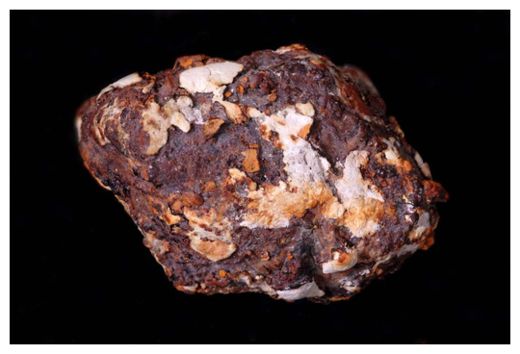 Other objects on display include a much smaller meteorite, weighing about an ounce (32 grams), and excavated from a grain pit where ancient peoples of the Iron Age stored their crops. It was discovered in the 1970s at Danebury Hill Fort in Hampshire, though it wasn't until the 1980s when scientists analyzed metal in the walnut-size object did they realize its extraterrestrial origin.
Other objects on display include a much smaller meteorite, weighing about an ounce (32 grams), and excavated from a grain pit where ancient peoples of the Iron Age stored their crops. It was discovered in the 1970s at Danebury Hill Fort in Hampshire, though it wasn't until the 1980s when scientists analyzed metal in the walnut-size object did they realize its extraterrestrial origin.
The exhibition will also include a Damien Hirst "spot painting," which features the famous Beagle 2 spacecraft as its center spot. In addition, part of Newton's apple tree will be on display.
The story of how researchers are uncovering the origins of these impressive specimens will astonish and delight visitors to this remarkable exhibition, which also contains letters and books charting the history of scientific interest in meteorites.
The Royal Society's London headquarters will house the exhibit through March 30.
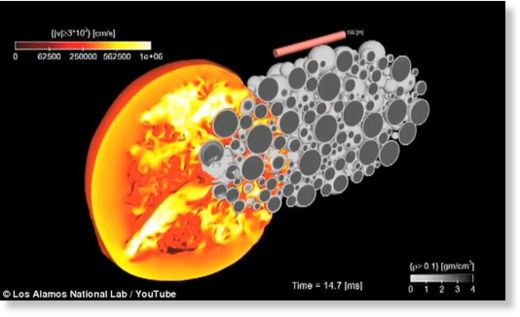 It sounds like a plot fit for a disaster movie - but this is real life.
It sounds like a plot fit for a disaster movie - but this is real life.
Scientists say they have worked out a way to blast an asteroid into space dust using an atomic bomb.
The plan has potentially world-saving consequences should an asteroid emerge on a collision course with Earth.
And unlike the film Armageddon - where Bruce Willis and his crew of stars fly a space shuttle to an oncoming Asteroid to drill a warhead into its core - the nuclear payload could be delivered by rocket.
Using one of the world's most powerful supercomputers at Los Alamos National Laboratory, physicists have calculated the effect of a nuclear blast on an incoming space rock.
Although Nasa and other space agencies have mapped most nearby asteroids, the effect of one catching us by surprise would be catastrophic and, they believe, is worth preparing for.
Robert Weaver, R&D scientist at Los Alamos, used Cielo, their newest Cray supercomputer, to simulate the effect of nuking an asteroid.
'If one of these objects is discovered at a short notice time, say a few months away, and is on an Earth crossing trajectory there could be potentially devastation on a world-wide scale,' he said.
Luckily, Mr Weaver's team believes asteroids are really conglomerates of rocks held together by the force of gravity and that one atomic blast could be enough to shatter them into harmless space dust.
The calculation uses an asteroid of the size and shape of the mapped Itokawa asteroid, which has 500m across by 250m wide and is thought to be composed of granite rocks.
By placing a one megaton bomb on the side of Itokawa, the simulation shows how a shockwave will travel through the asteroid from the detonation point and shake it to harmless rubble.
'As the shock wave moves through, ultimately this one megaton blast will disrupt all the rocks in the rock pile of this asteroid and if this were an Earth-crossing asteroid it would fully mitigate the hazard posed by the initial asteroid itself,' Mr Weaver said.
It is only since Los Alamos got their hands on Cielo, which runs on 32,000 processors, giving it a remarkable 1.35 petaflop calculating capacity, that simulations of this complexity could be run.
Mr Weaver said: 'The calculations I'm running new on Cielo in 3D are state of the art calculations on 32,000 processors.
'This is mind boggling to me. We've never run on this many processors.'
Video of a fireball entering Earth's atmosphere and exploding over Okayama, Japan, 12th February 2012.
Thanks to the fine folks at Sonotaco.jp for their videos/images.
Spartanburg - Officials in Spartanburg County said a large boom heard by many people in the Upstate Monday morning may be a meteor.
Law enforcement officials saw a large ball of fire that popped in the air around 1:45 a.m. Monday. Viewers from Greenville to Cherokee Counties called 7 On Your Side saying they heard the noise and their homes shook. No one was hurt.
Calls poured in to dispatchers across the Upstate soon after. Some said it sounded like a crash. Others said they thought someone was kicking in their door.
The National Weather Service tells 7 On Your Side it was most likely something speeding toward Earth from outer space. It could have been moving as fast as 10 times the speed of sound.
"Thank God for the atmosphere," says Doug Gegen.
Gegan is Staff Astronomer at the Roper Mountain Science Center and says something like the noise some heard overnight is worth noting.
"To have something out of the ordinary like this thing was last night would be very unusual," he adds.
Even a handful of gravel that enters the Earth's atmosphere at speeds much greater than the speed of sound will create a spectacular light show and make noise; such particles would likely not survive the trip down as they would all burn up along the way.
Millions of these enter the atmosphere every day; most of the ones that cause sky flashes are only pebble/gravel sized and unlikely to survive the trip to land.
Cbet nr. 3021, issued on 2012, February 16, announces the discovery of a new comet (discovery magnitude 21.6) by Larry Denneau and Richard Wainscoat in four exposures taken with the 1.8-m Pan-STARRS 1 telescope at Haleakala on February 15.3. The new comet has been designated P/2012 C3 (PANSTARRS).
We performed some follow-up measurements of this object, while it was still on the neocp. Stacking of ten R-filtered exposures, 60-sec each, obtained remotely, from the Siding Spring-Faulkes Telescope South on 2012, Feb. 16.6, through a 2.0-m f/10.0 Ritchey-Chretien + CCD, shows that this object is a comet: faint fan-shaped tail, nearly 6-arcsec long in PA 284.
Our confirmation image:
M.P.E.C. 2012-D03 assignes the following preliminary parabolic orbital elements to comet P/2012 C3: T 2011 Oct. 11.99; e= 0.61; Peri. = 346.39; q = 3.67 AU; Incl.= 9.38
Many people across the Upstate called FOX Carolina and said they were awakened by a loud boom and flash of light early Monday morning.
Most of the reports of the unusual phenomenon came from people living in Cherokee, Spartanburg and Greenville counties at about 1:45 a.m.
Officials at the National Weather Service at the Greenville-Spartanburg International Airport said that based on eyewitness reports, the event was likely a meteor.
The Weather Service said there was a flash in the sky about 1:46 a.m. and they recorded a very faint flash with their cameras.
Spartanburg police told the Weather Service that they had received numerous calls from the public. They said that one of their officers said they saw a flash light up their car and saw various pieces disintegrate in the sky.
Greenville resident Joseph Fidler sent security camera video from his home showing a bright light illuminating his neighborhood and a reflection of the meteor in the windshield of his car below.
Stuart McDaniel, of Lawndale, NC, sent in video to FOX Carolina that shows a large fireball streaking across the lower horizon at about the same time as the meteor was reported in the Upstate.
Dr. Scott Howard, a geologist with the South Carolina Department of Natural Resources, said the chances of finding a meteorite are very slim. He said only six have ever been found in South Carolina, three of which were found in the Upstate.
Howard said objects coming into the atmosphere, known as meteors, are common and are usually called shooting stars. He said if something hits the ground, it is then called a meteorite.
Comment: Was Andy Steblyk just 'lucky' or is there presently a greater probability of anyone in the region seeing more than one fireball in his or her lifetime? Meteor statistics suggest that many more of us will have the opportunity to 'wish upon a shooting star' in the coming years.
Canada: Halifax 'fireball' probably a meteor, 2 February 2012
Meteor Flashes Through Edmonton Sky, 13 January 2012
Fireball streaks across early-morning sky in Edmonton, 31 March 2009
Fireball spotted in Edmonton sky, 27 November 2009
Fireball over Edmonton, 20 November 2008
Meteorites hit near Redwater, passed over Edmonton, 29 May 2007
Comment: We've been searching for any historical references to this so-called "February Fireballs" suggestion, but nothing has turned up so far. Is NASA spinning another yarn?? As James McCanney explained in Planet-X, Comets & Earth Changes, NASA's real role is to keep the public misinformed about the threat from cometary debris:

A chunk of debris from an old European rocket apparently fell from space Wednesday (Feb. 22) and crashed in a small village in Brazil, according to Brazilian news reports.
The piece of space junk, a spherical object, crashed at around 6 a.m. local time in the village of Anapurus in the state of Maranhão, according to the Brazilian newspaper Jornal Pequeno.
The metal sphere, which measures roughly 3.3 feet (1 meter) across, landed near a house and damaged some trees as it plummeted to the surface, according to the Jornal Pequeno.
The newspaper reported that residents of the village heard a loud bang and saw a bright flash of light before the object made its impact. Dedicated satellite observers were quick to offer suggestions about what the object could be and where it may have come from.
Ted Molczan, of Toronto, is a respected satellite spotter and a member of a network of devoted amateur skywatchers around the world. On the online satellite-tracking community satobs.org, Molczan noted that the time of the crash and its location strongly indicate that the metallic sphere could be part of a spent European Ariane 44L rocket body.
"Typically, one to two objects are found each year somewhere in the world from re-entries," said Nicholas Johnson, chief scientist for orbital debris at the NASA Johnson Space Center in Houston, Texas.
"Last year, more than 100 metric tons of spacecraft and launch vehicles stages fell in uncontrolled reentries," Johnson told SPACE.com. "This amount was higher than recent previous years due to increased solar activity. 2012 might witness an even higher amount of uncontrolled reentry mass."
Johnson spoke earlier this month at the United Nations 49th Session of the Scientific and Technical Subcommittee Committee on the Peaceful Uses of Outer Space in Vienna.
At that UN gathering Johnson noted that nearly 500 satellite reentries occurred during 2011. Of that number, there were 474 that were uncontrolled reentries, along with 25 controlled reentries by 17 spacecraft and 8 rocket bodies.
No accounts of personal injury or significant property damage were reported, Johnson said.
The Brazil crash appears to correlate with re-entry predictions for the Ariane 44L rocket body. According to Space Track, a website managed by the United States Strategic Command, that Ariane 44L rocket body fell to Earth on Feb. 22 at 0909 GMT (or 6:09 a.m. local time in Anapurus).
More photos of the large metal object were posted on a Brazilian blog. Curious townspeople inspected the piece of foreign debris, and even posed for pictures with it, before authorities collected the sphere, reported the Jornal Pequeno.
The crash site in Brazil is located on the predicted re-entry track, suggesting that what fell through the trees in the northeast region of the country was likely part of the old rocket.
The Ariane 44L was used to launch two communications satellites into geostationary orbit on April 17, 1997.
This is also not the first piece of space junk to land in Brazil - in March 2008, a similar spherical object fell to Earth and landed in a rural part of the city Rio Verde.
Earth orbit is littered with derelict pieces of rockets and broken satellites. These shards of space junk pose a lingering threat to other satellites and spacecraft in orbit, and efforts are being made to curtail the amount of trash left in space. Today, more than 22,000 pieces of space debris are tracked in Earth orbit.
Meteorites seem to be dropping everywhere. First China and now today comes word of fresh cosmic booty on the ground north of the town of Rockhaven (a wonderfully appropriate name) left in the wake of a brilliant fireball that appeared over Alberta, Canada this past Tuesday evening.
The meteor was described as blue-white and as bright as the moon. Some went even further and compared it to the sun. Observers reported hearing low rumbling noises for several minutes after it broke up and disappeared. These are all good signs that material survived the fiery, high pressure flight through Earth's atmosphere. The first specimens of what appears to be a very fresh meteorite were picked up not long after the fall on a road north of Rockhaven and can be viewed HERE. Yes, one of them is already up for sale!
The Rockhaven fall is just one of about a half dozen bright fireball sightings in North America this month. While that number isn't unusual, their very slow speed and deep penetration into the atmosphere is. Their incoming speed has been around 32,000 mph followed by a rapid deceleration and burnout at some 31 miles high.
"This month, some big space rocks have been hitting Earth's atmosphere," says Bill Cooke of NASA's Meteoroid Environment Office. "There have been five or six notable fireballs that might have dropped meteorites around the United States." The first one briefly lit up the sky over Dallas-Ft.Worth, Texas on February 1, wowing thousand with a sputtering light as bright as a full moon.
The incoming meteoroids - as they're known before breaking up and potentially landing as meteorites on the ground - range in size from "basketballs to buses". When astronomers analyzed their orbits based on photos and eyewitness observations, they all trace back to various locales in the asteroid belt between Mars and Jupiter. Most meteorites are thought to originate from collisions between asteroids that ultimately send fragments toward the Earth and other planets.
Because of this year's numerous sightings as well as those made by both amateurs and professionals in Februaries past, some astronomers suspect that a stream of meteors they've nicknamed the "February Fireballs" intersect Earth's orbit this time every year. Some studies show a correlation, some don't. We may soon get a more definitive answer thanks to a network of night eyes.
There are currently six all-sky cameras operated by NASA's All-Sky Fireball Network in north Alabama, northwest Georgia, southern Tennessee and southern New Mexico with many more in the planning stages. Like the ever-watching eye of Sauron in the Lord of the Rings story (sorry for the dark analogy), the cameras photograph the sky with fisheye lenses all night long. When a fireball is seen by more than one camera, astronomers can triangulate its height, speed and even determine an orbit. And once you know an orbit, you can trace the cosmic rock back to its ancestral home.
Scientists estimate that 37,000 to 78,000 tons of meteorite material falls to Earth each year. That number sounds huge, but remember that most meteoroids are broken up into dust from the profound heating and pressure experienced during atmospheric entry and never make it to the ground.
According to NASA astronomer Dr. Steve Odenwald, the Earth intercepts 19,000 meteoroids weighing over 3.5 ounces every day. Of these, only about 10 are recovered by human hunters each year. Our planet is big, very big, and much of what falls does so in the oceans unseen by nearly everyone. That's what makes finding a meteorite - especially one from a fresh fall - so rare.
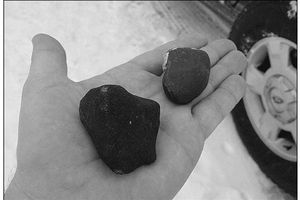 Rocks being offered for sale online
Rocks being offered for sale online
A man claims to have found the first known meteorites from a fireball that lit up the sky over Saskatchewan and Alberta Tuesday night.
A posting on Kijiji shows two roundish and blackened rocks a man says he found on the side of a highway north of Rockhaven. One of the rocks is listed for sale for an unspecified price and the other rock is shown suspended by a magnet.
Now geologists and astronomers who study meteorites are trying to get in touch with the man in an attempt to verify whether the rocks are connected to Tuesday's meteor sighting, which rattled houses as it zoomed over North Battleford.
Richard Huziak, a Saskatoon amateur astronomer and member of the Prairie Fireball Network, says the rocks in the picture look like chondrites, which match meteorites found after the Buzzard Coulee meteor crashed in central Saskatchewan in 2008.
Several researchers are trying to get in touch with the man - unsuccessfully, so far - in an effort to bring the rocks to the University of Saskatchewan for examination and testing.
"Until they're presented, it's hard to know what fall they came from," Huziak said. They may well be meteorites, he said, but ones that fell years ago.
U of S geologist Mel Stauffer is also trying to get in touch with the man in an effort to check the rocks' authenticity. "The photograph he posted on Kijiji looks to be of a meteorite," Stauffer said in an email.
University of Calgary geoscientist Alan Hildebrand, who co-ordinates the Canadian Fireball Reporting Centre, said anyone who has found a meteorite and wants to sell it would be wise to have experts identify it first. Some meteorites are more rare - and therefore far more valuable - than others.
"We have foolproof ways of telling if it's a recent fall or not," Hildebrand added.
When contacted by The StarPhoenix, the man behind the Kijiji ad was not willing to have his name or photograph in the paper.
Faye Rowat, one of a handful of residents in the tiny settlement of Rockhaven, said there have been a few people out searching the area since Tuesday's fireball. On Friday morning, she was about to head out with some magnets and her two grandsons, the youngest of which was enthused about the chance of coming across a space rock.
"It's a free gift from the asteroid belt," Huziak said. "We can build spaceships for a hundred million dollars and go out and get pieces. Or they can just fall to the Earth and we can pick them up. Each rock tells you a bit more about the origin of the solar system and they all date back to the age of the formation of the Earth, or even before that."
Both Huziak and Hildebrand said several new videos have surfaced in the past couple of days that are allowing them to narrow down the location of the so-called "strewn field" where pieces fell, which they say is likely south of Rockhaven. The hamlet is about 190 kilometres northwest of Saskatoon.
Huziak said several explosions are visible in the video footage, suggesting pieces broke off the meteor higher up and may have survived the fall to Earth.
Security camera footage from the Corman Air Park shows an intensely bright greenish ball that appears for just a second, hurtling towards the ground, leaving a brief trail of yellow sparks in its wake.
Hildebrand said he wants to see more footage of that night from different locations, including cameras that were pointed at the ground and captured flashes of light and objects' shadows. More footage from different angles could help them narrow the crash site down to a dozen square kilometres and would result in a more fruitful meteorite search, he said.
"We're not there yet." Would-be rock hunters should also know there's an etiquette to abide by. You can legally remove a rock you find on public land, but a meteorite sitting in a farmer's field belongs to him and if you remove it without permission, you are trespassing, Huziak said.
On Thursday, one aspiring meteorite hunter put out a call on Lloydminster's Kijiji page looking for Rockhavenarea landowners' permission to search on their property. "Will pay for access & split 50/50," the post says.
Huziak hopes people in the Rockhaven area are keeping an eye out for blackened rocks, which should be easily spotted on frozen ponds and against the backdrop of snow.
"It's good for everyone to be out looking, because if there's a serendipitous discovery, we all benefit from it," he said.
Sadly for meteorite hunters, this weekend's weather outlook is not favourable - a storm warning with five to 10 centimetres of snow, wind gusting to 70 kilometres an hour and poor visibility is forecast for Saturday.
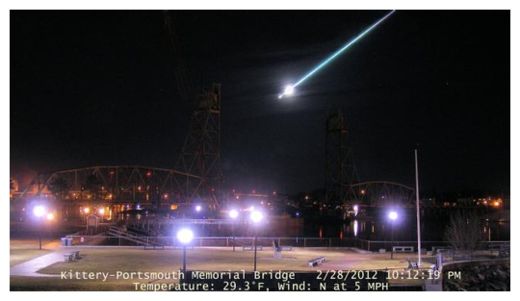
Manchester, New Hampshire -- It was reddish-orange and only appeared in the sky for a moment or two, but it has a lot of people in the area asking questions.
Several people in New Hampshire reported seeing a bright object in the sky about 10 p.m. Tuesday.
Witnesses said it was a colored, glowing ball that was bright for few seconds and then vanished.
Melanie Wilson, of Concord, said she was driving home from work on Airport Road when she saw the object above her car. She said the thought it was going to land on the highway, and she slowed down.
But in a flash, it was gone.
"It was scary and neat," Wilson said.
Sue Morel said she was stopped at a light in Hollis when she saw the bright, glowing ball. She said she had no idea what it was and watched it for only a second before it disappeared above the tree line.
Tiffany Nardino of the McAuliffe-Shepard Discovery Center said the explanation is pretty simple. She said it was most likely a fireball, a bright meteor that burned up in the atmosphere.
She said it was probably a piece of rock about the size of a quarter, something that is not very commonly visible.
Nardino said a fireball is like any other meteor except it is generally larger and makes a colored glow when it vanishes.
She said there are usually only one or two in this part of the country each year.
Did you see the flash in the sky? Tell us about it below.
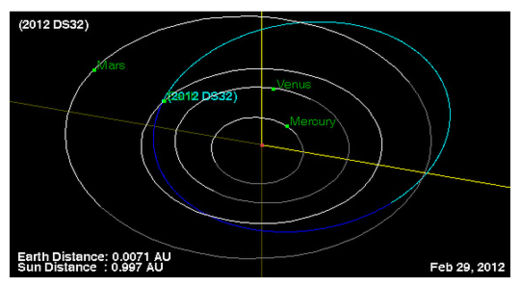
A small asteroid about the size of a house will make one cosmic leap by Earth today, just in time for leap day.
The newfound asteroid 2012 DS32 poses no chance of hitting our planet, but will make an evening pass to mark this special day for Earth, NASA scientists said.
"Happy Leap Day! Small asteroid 2012 DS32 will safely pass Earth at 7:36 p.m. EST," astronomers with NASA's Asteroid Watch program wrote in a Twitter post. The Asteroid Watch program is part of the Near Earth Object office at NASA's Jet Propulsion Laboratory in Pasadena, Calif.
The asteroid 2012 DS32 is about 61 feet (about 18.5 meters) across and will still be a good distance away from Earth when it makes its closest approach. At the nearest point, the asteroid will zoom within about 446,000 miles (717,767 kilometers) of the planet, which is slightly less than twice the distance between the Earth and the moon. The average Earth-moon distance is about 238,000 miles (382,900 km).
While it will still be leap day in the United States during the asteroid's flyby, it will already be March 1 in Europe and other areas farther east due to their local time zones.
Leap Day is an extra 29th day added to the month of February every four years in order to keep the Gregorian calendar of months and days aligned with the Earth's seasons. A year with a leap day is known as a leap year.
NASA scientists and other teams of astronomers routinely hunt for space rocks like 2012 DS32 as part of an ongoing search for potentially hazardous asteroids that could pose a threat of impacting Earth.

© Rolando Ligustri
New image of the comet Garradd, ever closer to the globular cluster M92. In this case, I have worked with a greater resolution in such a way as to able to appreciate all the dozens of small galaxies present in the photo. apo 106/530 STL11000 L=600s in bin 1 RGB=60s each in bin2.
New image of the comet Garradd, ever closer to the globular cluster M92. In this case, I have worked with a greater resolution in such a way as to able to appreciate all the dozens of small galaxies present in the photo. apo 106/530 STL11000 L=600s in bin 1 RGB=60s each in bin2.
The star cluster and the comet are both located in the constellation Hercules, high overhead in northern hemisphere skies before sunrise. Sky and Telescope offers a sky map of the comet's path. Observers with computerized GOTO telescopes can track the comet by plugging in orbital elements from the Minor Planet Center.
At the moment, Comet Garradd has an astronomical magnitude of +6.5, invisible to the naked eye but an easy target for backyard telescopes. Forecasters expect it to brighten by a factor of ~2 in the weeks ahead as the comet approaches Earth for a 1.3 AU close encounter in early March. This could be a good time to invest in a Comet Hunter.
More Images:
From Lorenzo Comolli of Bogli, Italy; from Gregg Ruppel of Ellisville, MO; from Mike Broussard of Maurice, Louisiana; from Dr Paolo Candy of Ci.A.O. Cimini Astronomical Observatory - Italy
An expert on astronomy says the glowing fireball that some Halifax residents saw streaking through the sky Thursday night was probably a meteor.
Alan Strauss at the Mount Lemmon Sky Center in Arizona says these spectacular fireballs are quite common.
However, Strauss says people often miss them because they just don't look up that much.
Comment: That or they just have incredibly short memories. This is from January 2009:
Canada: Halifax, Nova Scotia - Ball of Fire
Canada: Halifax, Nova Scotia - Ball of Fire
The fiery object appeared to travel from west to east over the Halifax area at around 9:30pm.

© Wayne England
Out-of-this world beauty: An amazing comet streaks over a swamp in South Australia. It was captured by photographer Wayne England who was lying in wait
Out-of-this world beauty: An amazing comet streaks over a swamp in South Australia. It was captured by photographer Wayne England who was lying in wait
Caught on camera over a swamp in Australia the stunning image shows the trail of the Comet Lovejoy as it passed close to Earth.
Lying in wait in the darkness in Poocher Swamp Game Reserve near Adelaide, was photographer Wayne England who took this amazing snap.
As his picture shows the darkness of the swamp and the reflection of the water made the perfect backdrop to reflect the comet zooming across the sky.
Mr England, 40, who is a member of the Astronomical Society of South Australia, said he first heard about the comet travelling close to Earth in December and had several nights to try and catch a glimpse at 4am in the morning on Christmas Eve.
He said: 'Each night I travelled 6miles out of the town to my favourite site, Poocher Swamp Game Reserve because of the dark sky, water and reflections of the stars in them water.
'The comet looked amazing when I first saw it on the morning of Christmas Eve. It was so bright and large in the pre-dawn sky.

© Wayne England
Comet Lovejoy blazes a trail and manages to compete with a sky full of stars. That streak of light to the right appears to be a separate fireball entering the atmosphere
Comet Lovejoy blazes a trail and manages to compete with a sky full of stars. That streak of light to the right appears to be a separate fireball entering the atmosphere
'It had two tails, one curving slightly away from the other at the top. It was like a beacon or a laser shooting up into the sky.
'I'm so glad I saw it when it was so bright and on subsequent nights because it faded fast over several days.
'This was of course the best time to take photos of it and because it was moving relatively fast - you could see the amount it had moved each night.'
Wayne used a Nikon D7000 with a Tokina 12-24mm lens with settings of ISO 3200 or 6400, 20-30secs exposure at f/4.
He said: 'I like the wide angle this lens produces and with it I often try to get reflections of the stars in the water, which to create a good effect can only be done with wider angle lenses.
'The comet was initially visible just before sunrise but by the New Year it was visible from about 1am but had faded considerably.
Witnesses spotted it from Oklahoma City to south of Waco
At about 8 p.m. on Wednesday night, a meteor zipped across the sky over Dallas, then burst into a streaking flame before burning out.
WFAA received more than 200 reports, and a Federal Aviation Administration spokesman confirmed that it was likely a meteor or meteorite. Sightings extended from as far north as Oklahoma City to south of Waco. Some heard a boom. On its Wednesday night broadcast, CBS 11 described it as an "electrophonic" meteor -- one that can be heard as it burns.
Comments on WFAA's Facebook page came from The Colony, Rockwall, and beyond, each describing it slightly differently: as a "large blue and green ball with a orange tail," as "bright green," and as "real bright blue with a long fire trail behind it."
I actually saw it as it burned out. In what was undoubtedly an optical illusion, it looked like it was coming from south of downtown Dallas and moving in a northeast direction, as if headed for White Rock Lake. I happened to be watching a performance online by Bjork from Tuesday night's The Colbert Report. She sang "Cosmogony," a song from her new album Biophilia and I was trying to figure out the lyrics.
The song, coincidentally -- or not?! -- is about the creation of the universe:
"Heaven, heaven's bodies / World around me make me wonder / And they say back then our universe wasn't even there / Until a sudden bang and then there was light, was sound, was matter / And it all became the world we know."The view from my window looks towards Baylor Hospital, and it's not-uncommon to see helicopters hovering, then landing on Baylor's helipad. So, initially the gold streak in the sky appeared to be just another helicopter about to land. It looked surprisingly close. But its path had an unfamiliar, angular slant, and that's what caught my eye. Then it began to burn out, its head growing larger, with a long tail. All of a sudden the light extinguished, and then a minute or two later, a boom -- as if it had crashed and landed somewhere. The whole thing lasted all of 15 seconds.
Several blockbuster movies, television shows and commercials have depicted the discovery of an asteroid heading towards Earth and usually, somehow, impending doom is averted. But how do the discoveries of Near Earth Objects really happen? Asteroid 2012 BX34 buzzed by Earth last week, and even though this small asteroid was never considered a threat to Earth, its discovery still piqued the interest of the public.
 It was discovered by Alex Gibbs, an astronomer and software engineer from the Catalina Sky Survey. Universe Today asked Gibbs to share his experiences of being an asteroid hunter and what it was like to find this latest NEO that made the Top-20 list of closest approaches to Earth.
It was discovered by Alex Gibbs, an astronomer and software engineer from the Catalina Sky Survey. Universe Today asked Gibbs to share his experiences of being an asteroid hunter and what it was like to find this latest NEO that made the Top-20 list of closest approaches to Earth.
The Catalina Sky Survey is a research program at the University of Arizona and is part of the Spaceguard Survey, a NASA project to discover and catalog Earth-approaching and Potentially Hazardous Asteroids (PHAs).
When astronomers look through telescopes, asteroids don't look much different from stars - they are just points of light. But these points of light are moving; however they are moving slow enough that to detect the motion, astronomers take a series of images, usually four images spaced 10-12 minutes apart.
Then, the observers run specialized software to examine their images for any star-like objects that are moving from one image to the next. The software removes any candidates that correspond to known objects or main-belt asteroids.
Gibbs said the software has a low detection threshold to avoid missing anything, so the observer looks over what the software found and determines which are real. The remaining objects that the software determines could be interesting are then sent in to the Minor Planet Center (MPC) at the Smithsonian Astrophysical Observatory in Cambridge, Massachusetts, for the team or others to follow up.
Gibbs said his discovery images of 2012 BX34 were taken at 10:30 UT (3:30 am in Tucson) on January 25, 2012. He was using a Schmidt telescope on Mount Bigelow. At the time, the object was 1.8 million km away, moving 1.15 degrees/day across the sky, and at 20th magnitude.
On the night of discovery, Gibbs said 2012 BX34 seemed just like most of the NEOs they find. But something unusual happened the following night.
"No one seemed to be able to find it," Gibbs said via email. "That happens sometimes, but it should have been pretty easy for the observatories that were looking. When my colleague, Rik Hill, found a 'new' object nearby I was suspicious that it might be the same object. The object's rapid increase in brightness and apparent motion had made it difficult to recognize as the same object."
When Gibbs put the two observations together he could tell they were the same object. But more importantly, he also could tell the object was going to come fairly close to Earth.
 "That's when I emailed the MPC to point out that they were the same object," Gibbs said.
"That's when I emailed the MPC to point out that they were the same object," Gibbs said.
Even though this is what Gibbs does for a living, certainly there must be a certain thrill (or butterflies in the stomach) when it is realized one of these NEOs is coming fairly close to Earth?
"We realized it was going to come pretty close, but wouldn't impact," Gibbs said. "I knew it was small enough that it would disintegrate if it did, so although I was excited, I was also a little disappointed that it wasn't going to put on more of a show. But I definitely prefer this to it being TOO flashy!"
The software at the MPC also figured out this asteroid was coming close, and just like in the movies, astronomer Gareth Williams, associate director of the MPC, was aroused from his sleep in the middle of the night by a pager message. But, said Williams in an interview with the BBC, "when I saw the miss distance was going to be 10 Earth radii, I said 'that's too far for me to get up,' so I rolled over and went back to sleep."
"That explains why the emails I exchanged with him later on were so short," Gibbs said.
At its closest approach, on January 27 15:15 UT, 2012 BX34 was 59,600 km from the Earth's surface, moving 729 deg/day, appearing at 14th magnitude, which is 250 times brighter than when Gibbs first saw it.
Gibbs said it is common for discoveries to be followed up by others astronomers, though it's not a rigid practice.
"Whenever we find something moving in an 'interesting' way we send it to the Minor Planet Center, as do all the other surveys," he said. "The MPC publishes the objects on their public NEO Confirmation Page. Various parties then follow the objects up, both pros and amateurs. Whether an object is deemed interesting or not is primarily determined by software that looks at the motion and brightness, though we can often tell when we see it. We also submit anything that appears to have cometary features."
As of January 29, 2012, 8,648 Near-Earth objects have been discovered, with about 840 of these NEOs being asteroids with a diameter of approximately 1 kilometer or larger. Also, 1,284 of these NEOs have been classified as PHAs.
"NEOs are ones that come within 1.3 AU of the Sun (since the Earth is at 1 AU it means they pass through our neighborhood)," Gibbs said. " PHAs are those that are larger than about 150 m (500 ft) and come within 0.05 AU of Earth's orbit, so that at some point in the future they may cross paths." (See more info on PHAs here)
"The large asteroids are much brighter than objects like 2012 BX34," Gibbs said. "We see them as they orbit the Sun, and can determine if they are likely to come close to the Earth at some point. That gives us a lot more time to do something about an impact from the most dangerous asteroids. However, we ought to be doing more to catalog all the asteroids that could potentially take out a city or cause a tsunami. We are finding them now, but not fast enough. An asteroid impact is one of the few predictable and potentially preventable natural disasters."
Even though asteroid 2012 BX34 was one of the top-20 closest approaches by an asteroid, its size made it a non-issue. While bus-sized sounds pretty big, this is small enough that it would break apart and burn up in the atmosphere. Instead, it passed by harmlessly.
"But a close fly-by like this one serves to remind people that asteroids of all sizes do come by the Earth," said Gibbs. "We need to be vigilant."
As for Gibbs, he is back at his job of asteroid hunting, and tonight will be scanning the skies from a larger telescope on Mt. Lemmon in Arizona.

© Alex Gibbs, Catalina Sky Survey/University of Arizona
The images in which asteroid 2012 BX34 was discovered. Images are from Jan. 25, 2012 10:30 UT.
The images in which asteroid 2012 BX34 was discovered. Images are from Jan. 25, 2012 10:30 UT.
The Catalina Sky Survey is a research program at the University of Arizona and is part of the Spaceguard Survey, a NASA project to discover and catalog Earth-approaching and Potentially Hazardous Asteroids (PHAs).
When astronomers look through telescopes, asteroids don't look much different from stars - they are just points of light. But these points of light are moving; however they are moving slow enough that to detect the motion, astronomers take a series of images, usually four images spaced 10-12 minutes apart.
Then, the observers run specialized software to examine their images for any star-like objects that are moving from one image to the next. The software removes any candidates that correspond to known objects or main-belt asteroids.
Gibbs said the software has a low detection threshold to avoid missing anything, so the observer looks over what the software found and determines which are real. The remaining objects that the software determines could be interesting are then sent in to the Minor Planet Center (MPC) at the Smithsonian Astrophysical Observatory in Cambridge, Massachusetts, for the team or others to follow up.
Gibbs said his discovery images of 2012 BX34 were taken at 10:30 UT (3:30 am in Tucson) on January 25, 2012. He was using a Schmidt telescope on Mount Bigelow. At the time, the object was 1.8 million km away, moving 1.15 degrees/day across the sky, and at 20th magnitude.
On the night of discovery, Gibbs said 2012 BX34 seemed just like most of the NEOs they find. But something unusual happened the following night.
"No one seemed to be able to find it," Gibbs said via email. "That happens sometimes, but it should have been pretty easy for the observatories that were looking. When my colleague, Rik Hill, found a 'new' object nearby I was suspicious that it might be the same object. The object's rapid increase in brightness and apparent motion had made it difficult to recognize as the same object."
When Gibbs put the two observations together he could tell they were the same object. But more importantly, he also could tell the object was going to come fairly close to Earth.

© Catalina Sky Survey/Alex Gibbs
2012 BX34 passing in front of galaxies in Virgo about 4.5 hours before closest approach to Earth.
2012 BX34 passing in front of galaxies in Virgo about 4.5 hours before closest approach to Earth.
Even though this is what Gibbs does for a living, certainly there must be a certain thrill (or butterflies in the stomach) when it is realized one of these NEOs is coming fairly close to Earth?
"We realized it was going to come pretty close, but wouldn't impact," Gibbs said. "I knew it was small enough that it would disintegrate if it did, so although I was excited, I was also a little disappointed that it wasn't going to put on more of a show. But I definitely prefer this to it being TOO flashy!"
The software at the MPC also figured out this asteroid was coming close, and just like in the movies, astronomer Gareth Williams, associate director of the MPC, was aroused from his sleep in the middle of the night by a pager message. But, said Williams in an interview with the BBC, "when I saw the miss distance was going to be 10 Earth radii, I said 'that's too far for me to get up,' so I rolled over and went back to sleep."
"That explains why the emails I exchanged with him later on were so short," Gibbs said.
At its closest approach, on January 27 15:15 UT, 2012 BX34 was 59,600 km from the Earth's surface, moving 729 deg/day, appearing at 14th magnitude, which is 250 times brighter than when Gibbs first saw it.
Gibbs said it is common for discoveries to be followed up by others astronomers, though it's not a rigid practice.
"Whenever we find something moving in an 'interesting' way we send it to the Minor Planet Center, as do all the other surveys," he said. "The MPC publishes the objects on their public NEO Confirmation Page. Various parties then follow the objects up, both pros and amateurs. Whether an object is deemed interesting or not is primarily determined by software that looks at the motion and brightness, though we can often tell when we see it. We also submit anything that appears to have cometary features."
As of January 29, 2012, 8,648 Near-Earth objects have been discovered, with about 840 of these NEOs being asteroids with a diameter of approximately 1 kilometer or larger. Also, 1,284 of these NEOs have been classified as PHAs.
"NEOs are ones that come within 1.3 AU of the Sun (since the Earth is at 1 AU it means they pass through our neighborhood)," Gibbs said. " PHAs are those that are larger than about 150 m (500 ft) and come within 0.05 AU of Earth's orbit, so that at some point in the future they may cross paths." (See more info on PHAs here)
"The large asteroids are much brighter than objects like 2012 BX34," Gibbs said. "We see them as they orbit the Sun, and can determine if they are likely to come close to the Earth at some point. That gives us a lot more time to do something about an impact from the most dangerous asteroids. However, we ought to be doing more to catalog all the asteroids that could potentially take out a city or cause a tsunami. We are finding them now, but not fast enough. An asteroid impact is one of the few predictable and potentially preventable natural disasters."
Even though asteroid 2012 BX34 was one of the top-20 closest approaches by an asteroid, its size made it a non-issue. While bus-sized sounds pretty big, this is small enough that it would break apart and burn up in the atmosphere. Instead, it passed by harmlessly.
"But a close fly-by like this one serves to remind people that asteroids of all sizes do come by the Earth," said Gibbs. "We need to be vigilant."
As for Gibbs, he is back at his job of asteroid hunting, and tonight will be scanning the skies from a larger telescope on Mt. Lemmon in Arizona.
Last night, a spectacular fireball appeared in the skies of eastern Texas and Oklahoma. As is often the case for unexpected night-sky phenomena, few pictures are available. The best so far comes from a police dash-board camera in the small town of Little River-Academy, TX:
One wonders if the officer looked up from writing the ticket to witness the spectacle above.
According to Bill Cooke of NASA's Meteoroid Environment Office, this was probably a natural object--a small asteroid about the size of a car or bus--not a decaying satellite or other manmade space debris. The fireball, which disintegrated in the general vicinity of Dallas-Fort Worth, was bright enough to be seen on NASA cameras located in New Mexico more than 500 miles away. "It was about as bright as the full Moon (astronomical magnitude -13)," estimates Cooke, who is still analyzing data and sighting reports in hopes of calculating the object's orbit. He might yet figure out where the Texas fireball came from. Stay tuned for updates.
One wonders if the officer looked up from writing the ticket to witness the spectacle above.
According to Bill Cooke of NASA's Meteoroid Environment Office, this was probably a natural object--a small asteroid about the size of a car or bus--not a decaying satellite or other manmade space debris. The fireball, which disintegrated in the general vicinity of Dallas-Fort Worth, was bright enough to be seen on NASA cameras located in New Mexico more than 500 miles away. "It was about as bright as the full Moon (astronomical magnitude -13)," estimates Cooke, who is still analyzing data and sighting reports in hopes of calculating the object's orbit. He might yet figure out where the Texas fireball came from. Stay tuned for updates.
Comment: Here's a closer view of the fireball:
Wichita, Kansas - If you saw an unusual bright light moving across the sky Wednesday night, chances are, you were looking at a meteor.
A patrol car dash camera in northern Texas captured the falling meteor as it was streaking across the sky around 8 p.m. Wednesday night.
"There was a bright light that was seen in the sky from Wichita through Oklahoma and down into Texas," said director of Lake Afton Observatory, Greg Novacek.
Traveling anywhere from ten to forty miles per second, he estimates it landed in Texas, just south of Waco.
"There was actually a sonic boom heard near Waco from the meteor," said Novacek.
While most meteorites are never found because they land in the ocean, Kansans seem to stumble upon the space rocks more often than others.
"Kansas actually ranks second in the U.S. for recorded meteorite falls and the only state ahead of us is Texas," said Wichita Meteorite Society Founder, Jerry Calvert.
That is because farmers plow up much of the state, exposing the meteorites.
"They claim that every square mile of the earth has a meteorite on it, at least one meteorite , so the trick then comes how you can actually identify them," said Calvert.
"The best way to check is to get a magnet, and if it sticks, chances are you've found a meteorite," said Novacek.
Meteorites hit earth about once a day, people just usually do not notice them.
Comment: That's a version of 'nothing-to-see-here-folks' we haven't heard before! We here at Sott.net sure notice 'em!
This hit Canada the following night: Halifax 'fireball' probably a meteor
It is true however, that the vast majority aren't paying attention...
What makes Wednesday night's meteor so special is the fact that people actually saw it, thanks to clear, dark skies, timing, and location.
If you spot a meteor the size of Wednesday night's, you will have about twenty seconds to notice it, whereas a shooting star burns out within about two seconds.
Posted on behalf of Ichiko Fuyuno.
Nearly six years after it was proposed, Japan's Space Activities Commission has finally approved the development of Hayabusa 2, successor to the Hayabusa asteroid probe, which returned samples to Earth in 2010 (see 'Asteroid visit finds familiar dust').
Hayabusa 2 will aim for 1999JU3, a small asteroid about 900 metres in diameter. The asteroid is slightly bigger than the first mission's destination, Itokawa, but it is supposedly more primitive and contains more organic or hydrated materials, which may provide clues about the origins of the Solar System. The Japan Aerospace Exploration Agency (JAXA) plans to launch Hayabusa 2 in 2014 or 2015, land on the asteroid in 2018 and return to the Earth in 2020.
Hayabusa 2 will be closely based on its predecessor, but will incorporate many "lessons learned" from the problems encountered by the first mission. In the original Hayabusa, the ion-thrust engines died before the end of the mission, so the team will work to extend their operating life. The probe crashed down on the surface when it attempted its first landing, because of a malfunction of an obstacle-detection sensor. The sensor will be scrapped and navigation systems improved to enable a smooth touch-down.
Moreover, the original Hayabusa had expected to fire two bullets on the Itokawa surface to blast up debris that could be sampled, but it didn't happen because of problems with the autonomous navigation systems. Instead of using bullets, the new team will develop an impactor to drop on the asteroid surface.
But aside from the technical challenges, funding could be a problem. For 2012, Hayabusa 2 has been allotted 3 billion yen (US$39 million), less than half the amount requested by JAXA and only a slice of the expected total cost of 26 billion yen ($342 million).
Nearly six years after it was proposed, Japan's Space Activities Commission has finally approved the development of Hayabusa 2, successor to the Hayabusa asteroid probe, which returned samples to Earth in 2010 (see 'Asteroid visit finds familiar dust').
Hayabusa 2 will aim for 1999JU3, a small asteroid about 900 metres in diameter. The asteroid is slightly bigger than the first mission's destination, Itokawa, but it is supposedly more primitive and contains more organic or hydrated materials, which may provide clues about the origins of the Solar System. The Japan Aerospace Exploration Agency (JAXA) plans to launch Hayabusa 2 in 2014 or 2015, land on the asteroid in 2018 and return to the Earth in 2020.
Hayabusa 2 will be closely based on its predecessor, but will incorporate many "lessons learned" from the problems encountered by the first mission. In the original Hayabusa, the ion-thrust engines died before the end of the mission, so the team will work to extend their operating life. The probe crashed down on the surface when it attempted its first landing, because of a malfunction of an obstacle-detection sensor. The sensor will be scrapped and navigation systems improved to enable a smooth touch-down.
Moreover, the original Hayabusa had expected to fire two bullets on the Itokawa surface to blast up debris that could be sampled, but it didn't happen because of problems with the autonomous navigation systems. Instead of using bullets, the new team will develop an impactor to drop on the asteroid surface.
But aside from the technical challenges, funding could be a problem. For 2012, Hayabusa 2 has been allotted 3 billion yen (US$39 million), less than half the amount requested by JAXA and only a slice of the expected total cost of 26 billion yen ($342 million).
Back in September, The Takeaway was gazing up at the sky in trepidation at the news that yet another piece of redundant manmade space junk was hurtling back to Earth, threatening to extensively remodel someone's lawn.
Four months later and we are ducking again, but this time the author of our fear is not some rocket scientist who forgot that what goes up must come down, but the universe itself.
It isn't, it turns out, the old tin cans we should be concerned about so much as the thousands of Near-Earth Objects (NEO) - asteroids large and small - heading our way, some with the potential to explode in our atmosphere with the force of a nuclear arsenal and cause an Extinction Level Event.
Remember the dinosaurs? Well exactly.
The good news is that we are getting quite good at spotting these things. So far Nasa, which began looking in earnest in 2005, has discovered 8,000, with another 70 popping up every month.
The bad news is that we aren't yet good enough at spotting them and, even if we did spot one about to bash into is, there isn't much we could do about it.
Take the asteroid 2012 BX34, an 11-metre rock that whipped past the planet at about 8pm UAE time last Friday: 60,000 kilometres might not sound like a near-miss, but that's just one sixth of the distance to the Moon and, travelling at close to 50,000kph, BX34 was just a little over an hour away from dropping in.
And, in a nutshell, we didn't see it coming - the first anyone knew about it was the previous Wednesday. And BX34's near-miss barely made it into the top-20 of such near misses.
"There is," Gareth Williams of the Minor Planet Centre told the BBC, after some no-doubt fevered calculations, "absolutely no chance of it hitting us" - which was just as well, as a paper published last week, with impeccable timing, made clear.
"There is currently no concerted international plan addressing the impact threat and how to organise, prepare and implement mitigation measures," was the headline point from the paper, 'A Global Approach to Near-Earth Object Impact Threat Mitigation', written by a collaborating group of scientists from the US, UK, Russia, Germany, France and Spain.
There is no shortage of ideas, say the scientists - just a shortage of political will and cash to get them off the drawing board: in theory, "kinetic impactor" spacecraft could be launched, a so-far entirely imaginary "Gravity tractor" could be deployed on sentry duty or (and this, you will remember, was Bruce Willis's favourite option, as modelled in the 1998 film Armageddon), we could nuke 'em.
But whatever solution we choose, we should choose it soon. Looming just over the horizon is the potentially apocalyptic asteroid Apophis - and the clue is in the name. Apophis was an ancient Egyptian demon, aka The Uncreator.
This 330m-wide rock is due to come awfully close in 2029 - just 29,470 km close, says Nasa - but it will miss us. Phew.
When it returns in 2036, however, there could be "a small estimated chance of impact" (though "less than 1 in 45,000" doesn't sound that small) while new measurements possible in 2013 would "likely confirm" that Apophis will miss us by millions of kilometres.
Likely? Sort of reassuring. Except Russian scientists don't agree.
What's "likely" for them, said Professor Leonid Sokolov of the St Petersburg State University, is that a "collision with Earth may occur on April 13, 2036".
Nasa remains sanguine. "The threat to any one person from auto accidents, disease, other natural disasters and a variety of other problems is much higher than the threat from NEOs," it says.
"Our best insurance rests with the NEO scientists and their efforts to first find these objects and then track their motions into the future."
Fine. But then what? Send for Bruce?
Four months later and we are ducking again, but this time the author of our fear is not some rocket scientist who forgot that what goes up must come down, but the universe itself.
It isn't, it turns out, the old tin cans we should be concerned about so much as the thousands of Near-Earth Objects (NEO) - asteroids large and small - heading our way, some with the potential to explode in our atmosphere with the force of a nuclear arsenal and cause an Extinction Level Event.
Remember the dinosaurs? Well exactly.
The good news is that we are getting quite good at spotting these things. So far Nasa, which began looking in earnest in 2005, has discovered 8,000, with another 70 popping up every month.
The bad news is that we aren't yet good enough at spotting them and, even if we did spot one about to bash into is, there isn't much we could do about it.
Take the asteroid 2012 BX34, an 11-metre rock that whipped past the planet at about 8pm UAE time last Friday: 60,000 kilometres might not sound like a near-miss, but that's just one sixth of the distance to the Moon and, travelling at close to 50,000kph, BX34 was just a little over an hour away from dropping in.
And, in a nutshell, we didn't see it coming - the first anyone knew about it was the previous Wednesday. And BX34's near-miss barely made it into the top-20 of such near misses.
"There is," Gareth Williams of the Minor Planet Centre told the BBC, after some no-doubt fevered calculations, "absolutely no chance of it hitting us" - which was just as well, as a paper published last week, with impeccable timing, made clear.
"There is currently no concerted international plan addressing the impact threat and how to organise, prepare and implement mitigation measures," was the headline point from the paper, 'A Global Approach to Near-Earth Object Impact Threat Mitigation', written by a collaborating group of scientists from the US, UK, Russia, Germany, France and Spain.
There is no shortage of ideas, say the scientists - just a shortage of political will and cash to get them off the drawing board: in theory, "kinetic impactor" spacecraft could be launched, a so-far entirely imaginary "Gravity tractor" could be deployed on sentry duty or (and this, you will remember, was Bruce Willis's favourite option, as modelled in the 1998 film Armageddon), we could nuke 'em.
But whatever solution we choose, we should choose it soon. Looming just over the horizon is the potentially apocalyptic asteroid Apophis - and the clue is in the name. Apophis was an ancient Egyptian demon, aka The Uncreator.
This 330m-wide rock is due to come awfully close in 2029 - just 29,470 km close, says Nasa - but it will miss us. Phew.
When it returns in 2036, however, there could be "a small estimated chance of impact" (though "less than 1 in 45,000" doesn't sound that small) while new measurements possible in 2013 would "likely confirm" that Apophis will miss us by millions of kilometres.
Likely? Sort of reassuring. Except Russian scientists don't agree.
What's "likely" for them, said Professor Leonid Sokolov of the St Petersburg State University, is that a "collision with Earth may occur on April 13, 2036".
Nasa remains sanguine. "The threat to any one person from auto accidents, disease, other natural disasters and a variety of other problems is much higher than the threat from NEOs," it says.
"Our best insurance rests with the NEO scientists and their efforts to first find these objects and then track their motions into the future."
Fine. But then what? Send for Bruce?
Comment: Exactly, then what??
It's not big kick-ass asteroids we need to be thinking about. It's the possibility of micro-meteorites and cometary dust bringing all sorts of chaos people in the modern era haven't seen before.
New Light on the Black Death: The Cosmic Connection
T. Spahr, Minor Planet Center, noted that this object appears identical to an apparently asteroidal object discovered by the Mount Lemmon Survey on Nov. 3 (observer R. Kowalski; discovery observations tabulated below) and then designated 2011 VJ5.
We performed some follow-up measurements of this object, while it was still on the neocp. Stacking of 8 R-filtered exposures, 30-sec each, obtained remotely, from the Haleakala-Faulkes Telescope North on 2012, Feb.1.6, through a 2.0-m f/10.0 Ritchey-Chretien + CCD, under good seeing conditions, shows that this object is a comet: compact coma nearly 3" in diameter with a sharp central condensation, and a tail about 20" long in PA 292.
Our confirmation image below.
M.P.E.C. 2012-C14 assigns the following preliminary orbital elements to comet P/2011 VJ5: T 2011 Dec. 8.7; e= 0.55; Peri. = 315.12; q = 1.50 AU; Incl.= 3.97
We performed some follow-up measurements of this object, while it was still on the neocp. Stacking of 10 R-filtered exposures, 20-sec each, obtained remotely, from the Haleakala-Faulkes Telescope North on 2012, Jan.30.6, through a 2.0-m f/10.0 Ritchey-Chretien + CCD, under good seeing conditions, shows that this object appears "soft", compared to the nearby field stars of similar brightness (stellar FWHM of 1.2").
Our confirmation image:
M.P.E.C. 2012-C23 assignes the following preliminary parabolic orbital elements to comet C/2012 B3: T 2011 Nov. 29.91; e= 1.00; Peri. = 49.22; q = 3.52 AU; Incl.= 106.85

© lunarmeteoritehunters.blogspot.com
Kudos to http://lunarmeteoritehunters.blogspot.com for putting this map of eyewitness reports together. The Neon Markers are Sighting Reports and the Red Circle Markers are Allsky Camera Locations. Hopefully one of them picked up visual of this fireball.
Kudos to http://lunarmeteoritehunters.blogspot.com for putting this map of eyewitness reports together. The Neon Markers are Sighting Reports and the Red Circle Markers are Allsky Camera Locations. Hopefully one of them picked up visual of this fireball.
"It looked a lot brighter than a shooting star," German Osorio wrote on InsideNova.com's Facebook page. "Maybe only a few hundred feet up and it had that color that propane gets when it burns."
Kseniya Ledbetter of Fairfax said she spotted the fireball as she drove along Braddock Road east of Va. 28 around 10:15 p.m. "The most beautiful thing I ever saw! It was changing colors and then went out right above Hampton Chase neighborhood."
NASA, the FAA and the National Weather Service have yet to weigh in on the sky phenomena, but the website "The Latest Worldwide Meteor/Meteorite News" had more than 100 posts Saturday about the fireball from people in Virginia, New Jersey, New York, Maryland and North Carolina.
The American Meteor Society had 56 reports of a fireball sighting, again from New Jersey to North Carolina. Most reports came from Virginia and Maryland.
"Big and blue with a red tail. Looked like a meteor to us," Jessica Guido of Stafford wrote on our Facebook page.
Witnesses reported seeing the fireball between 10 and 10:30 p.m. All described it as very bright and very low.
"It was awesome, bright as could be with a hint of blue green," wrote Michele Janke, who saw the fireball along Prince William Parkway.
According to the American Meteor Society, fireballs are very bright meteors, about as bright as Venus in the morning and evening skies. About 10 to 15 meteorites fall to Earth each day, but sighting are rare since streaking fireballs often fall over the ocean, or during daylight hours when they can't be seen.
Comment: If sightings are so rare, why has SOTT.net collected eight reports of fireballs in the past week alone?
Fireballs are sometimes accompanied by sonic booms, as happened in Texas on Wednesday.
More than 200 people from Texas to Oklahoma reported a streaking fireball that night. A dash-mounted camera in a police cruiser captured the meteor's descent. Many also reported a loud boom as the fireball approached the ground. Watch the video here, courtesy of WFAA TV in Dallas-Forth Worth.
Comment: Reports of fireball with huge tail seen over Western Australia
Huge Fireball Over Tokyo, 2 February 2012
Fireball Photographed Over Corfu, Greece
Russia: Something fell from the sky in the village of Novobureysk
US: Wednesday night's Texas meteor so bright it was seen in Kansas
Canada: Halifax 'fireball' probably a meteor
Rhode Island, US: Extremely bright 'unexpected' meteor caught on camera
Russia: Something fell from the sky in the village of Novobureysk
Car's DVR camera captured a UFO. A glowing object fell from the sky on the outskirts of the village Novobureysk. The footage shows the date and time: January 22, 2012, 9:10.
Photo details: Canon EOS 40D camera; 15mm fisheye lens; f/2.8; ISO 800; 30 second exposure; Photoshop; Cropped.
Huge Fireball Over Tokyo, 2 February 2012
lunarmeteoritehunters.blogspot.com
Sun, 05 Feb 2012 05:06 CST
Sun, 05 Feb 2012 05:06 CST
5 Feb 2012: 'sas' Perth - 01.10am 10 sec. Australia - Yellowish huge yellowish shooting star not that I saw. No photo
5 Feb 2012: 'Rhett' WA Kalgoorlie - 1:05:00 15 seconds. N-S, Green As the moon N/A I've never see anything like it, it had a huge tail.
5 Feb 2012: 'dan' perth, WA, Australia - 1:18 15 seconds. N-S, orange, blue, yellow brighter than moon, larger than moon none massive, bigger than moon.
5 Feb 2012: 'Tara Isaac' Perth, Western Australia - 01.10 hours approx 20 secs. E-W, Large, bright green fiery head, long white tail. Brighter than Venus. No photo, seen while driving freeway North
Nighttime sky gazers looking for shooting stars sometimes catch a glimpse of a slower, brighter object streaking across the sky.
It's usually not a meteor, but rather a bolt or a paint chip that is part of the tons of debris floating in Earth's orbit, posing real dangers to space exploration.
A new film opening at Clark Planetarium on Friday called Space Junk 3D highlights some of those risks.
"What's the history of pioneers working through a new frontier? They leave behind stuff, it's what archaeologists find," said Seth Jarvis, director of the Clark Planetarium. "Space is the final frontier, and we're leaving behind stuff. The legacy of the space age includes footprints on moon, but it also includes orbiting clouds of litter that create a real challenge to orbiting activities."
Don Kessler, retired NASA senior scientist for Orbital Debris and star of the film, wrote a paper in 1978 predicting what will happen as more space junk filled Earth's orbit.
"I was trying to understand ... how long would it take before we had to worry about manmade objects colliding with one another," Kessler told The Tribune.
The answer: Right about now.
In 2007, China's military performed a test of an anti-satellite weapon. It worked, taking out a satellite and creating a massive debris cloud that will orbit for hundreds of years. Two years later, two satellites collided, again forming a huge debris cloud that puts other satellites, rockets and other space vehicles at risk.
"That collision put the icing on the cake," Kessler said. "We now have to pay a lot closer attention to what's going on."
Models show that such collisions will happen about every 10 years, but as those debris clouds expand, so will the likelihood of major damage.
Rules were established in the late 1990s to require all rockets that would be left in orbit to expend all of their fuel before they began orbiting, leveling off the numbers of explosions. But it didn't cut down on the amount of debris floating around the planet.
When Kessler wrote his first paper about space junk collisions, there were about 3,000 objects being monitored and tracked on Earth. Currently, there are more than 16,000 objects.
But in reality, there are probably hundreds of thousands more pieces than that, as only objects the size of softballs or bigger can be tracked. People may not worry about nuts, bolts and paint chips, but they are orbiting at between 15,000 and 17,500 miles per hour, said Patrick Wiggins, NASA Solar System Ambassador to Utah.
"Think about how tiny a bullet is, but you get it moving fast enough and your lights are out for good," Wiggins said.
It's a problem that could hinder space flight in the future, the planetarium's Jarvis said.
"We now have 50-plus years of putting stuff in orbit around the Earth, and we've not been mindful of the debris it leaves behind," Jarvis said. "It's like driving down the highway and scattering wrappers and soda cans out the windows."
There are new regulations in place to help, including requiring satellites to move out of heavily trafficked orbits within 25 years of launching, but they are not long-term solutions. Those new rules, in part, have created some "junkyard orbits" where defunct satellites can move to and be out of the way of active traffic, but that will only last so long.
"It's the idea that you solve pollution by dilution, but within those regions, things will start colliding," Kessler said.
He hopes to see some of the solutions proposed in the film, such as spacecraft that use nets to collect the debris or even a massive, automated recycling center in orbit. But he worries that the political will doesn't exist to support such endeavors.
"Like so many other environmental issues we've faced, we don't do what's needed until it's expensive to correct," Kessler said. "This is one problem that is going to be expensive to correct."
It's usually not a meteor, but rather a bolt or a paint chip that is part of the tons of debris floating in Earth's orbit, posing real dangers to space exploration.
A new film opening at Clark Planetarium on Friday called Space Junk 3D highlights some of those risks.
"What's the history of pioneers working through a new frontier? They leave behind stuff, it's what archaeologists find," said Seth Jarvis, director of the Clark Planetarium. "Space is the final frontier, and we're leaving behind stuff. The legacy of the space age includes footprints on moon, but it also includes orbiting clouds of litter that create a real challenge to orbiting activities."
Don Kessler, retired NASA senior scientist for Orbital Debris and star of the film, wrote a paper in 1978 predicting what will happen as more space junk filled Earth's orbit.
"I was trying to understand ... how long would it take before we had to worry about manmade objects colliding with one another," Kessler told The Tribune.
The answer: Right about now.
In 2007, China's military performed a test of an anti-satellite weapon. It worked, taking out a satellite and creating a massive debris cloud that will orbit for hundreds of years. Two years later, two satellites collided, again forming a huge debris cloud that puts other satellites, rockets and other space vehicles at risk.
"That collision put the icing on the cake," Kessler said. "We now have to pay a lot closer attention to what's going on."
Models show that such collisions will happen about every 10 years, but as those debris clouds expand, so will the likelihood of major damage.
Rules were established in the late 1990s to require all rockets that would be left in orbit to expend all of their fuel before they began orbiting, leveling off the numbers of explosions. But it didn't cut down on the amount of debris floating around the planet.
When Kessler wrote his first paper about space junk collisions, there were about 3,000 objects being monitored and tracked on Earth. Currently, there are more than 16,000 objects.
But in reality, there are probably hundreds of thousands more pieces than that, as only objects the size of softballs or bigger can be tracked. People may not worry about nuts, bolts and paint chips, but they are orbiting at between 15,000 and 17,500 miles per hour, said Patrick Wiggins, NASA Solar System Ambassador to Utah.
"Think about how tiny a bullet is, but you get it moving fast enough and your lights are out for good," Wiggins said.
It's a problem that could hinder space flight in the future, the planetarium's Jarvis said.
"We now have 50-plus years of putting stuff in orbit around the Earth, and we've not been mindful of the debris it leaves behind," Jarvis said. "It's like driving down the highway and scattering wrappers and soda cans out the windows."
There are new regulations in place to help, including requiring satellites to move out of heavily trafficked orbits within 25 years of launching, but they are not long-term solutions. Those new rules, in part, have created some "junkyard orbits" where defunct satellites can move to and be out of the way of active traffic, but that will only last so long.
"It's the idea that you solve pollution by dilution, but within those regions, things will start colliding," Kessler said.
He hopes to see some of the solutions proposed in the film, such as spacecraft that use nets to collect the debris or even a massive, automated recycling center in orbit. But he worries that the political will doesn't exist to support such endeavors.
"Like so many other environmental issues we've faced, we don't do what's needed until it's expensive to correct," Kessler said. "This is one problem that is going to be expensive to correct."
Comment: Our immediate cosmic environment IS probably littered with junk left there by certain governments who live by the maxim that the means justify the ends. But it is the height of denial to buy into the notion that all these reports of fireballs we've been collecting are man-made objects. This 'space junk' theme is starting to smell strangely like 'anthropogenic global warming', which provides a plausible - but 'not even wrong' - cover story for Earth changes.
Forget About Global Warming: We're One Step From Extinction!

© The Open University
Likely the largest meteorite found in Britain, this one spans about 1.6 feet (0.5 meters) across and has been on Earth some 30,000 years.
Likely the largest meteorite found in Britain, this one spans about 1.6 feet (0.5 meters) across and has been on Earth some 30,000 years.
With a weight that rivals a baby elephant, a meteorite that fell from space some 30,000 years ago is likely Britain's largest space rock. And after much sleuthing, researchers think they know where it came from and how it survived so long without weathering away.
The giant rock, spanning about 1.6 feet (0.5 meters) across and weighing 205 pounds (93 kilograms), was likely discovered by an archaeologist about 200 years ago at a burial site created by the Druids (an ancient Celtic priesthood) near Stonehenge, according to said Colin Pillinger, a professor of planetary sciences at the Open University.
Pillinger curated the exhibition "Objects in Space," which opens today (Feb. 9) and is the first time the public will get a chance to see the meteorite. The exhibition will explore not only the mystery that surrounds the origins of the giant meteorite, but also the history and our fascination with space rocks.
As for how the meteorite survived its long stint on Earth, researchers point to the ice age.
"The only meteorites that we know about that have survived these long ages are the ones that were collected in Antarctica," said Pillinger, adding that more recently, some ancient meteorites have been collected in the Sahara Desert. This rock came from neither the Sahara Desert nor Antarctica, but rather the Lake House in Wiltshire.
"Britain was under an ice age for 20,000 years," Pillinger told LiveScience, explaining the climate would have protected the rock from weathering.
At some point, the Druids likely picked up the meteorite when scouting for rocks to build burial chambers. "They were keen on building burial sites for [the dead] in much the same way the Egyptians built the pyramids," Pillinger said.
Then, years later, an archaeologist with ties to other, famous archaeologists, likely found the rock while excavating the Druids' burial sites, he said. The archaeologist then brought the rock back to his house in Wiltshire, where its more recent residents took notice and alerted researchers.
"The men whose house this was found at spent a lot of time opening these burial sites 200 years ago for purposes of excavating them," Pillinger said. "Our hypothesis is that the stone probably came out of one of those burial chambers."
The meteorite is called a chondrite, a group that includes primitive meteorites that scientists think were remnants shed from the original building blocks of planets. Most meteorites found on Earth fit into this group.

© The Open University
The much smaller meteorite on display at the Royal Society's exhibit was excavated from a grain pit where ancient peoples of the Iron Age stored their crops.
The much smaller meteorite on display at the Royal Society's exhibit was excavated from a grain pit where ancient peoples of the Iron Age stored their crops.
The exhibition will also include a Damien Hirst "spot painting," which features the famous Beagle 2 spacecraft as its center spot. In addition, part of Newton's apple tree will be on display.
The story of how researchers are uncovering the origins of these impressive specimens will astonish and delight visitors to this remarkable exhibition, which also contains letters and books charting the history of scientific interest in meteorites.
The Royal Society's London headquarters will house the exhibit through March 30.
New Comet: C/2012 C1 (McNAUGHT)
Cbet nr.3016, issued on 2012, February 11, announces the discovery of a new comet (discovery magnitude 18.8) by R. H. McNaught on CCD images obtained on February 5.5, 2012 taken with the 0.5-m Uppsala Schmidt telescope at Siding Spring. The new comet has been designated C/2012 C1 (McNAUGHT).
We performed some follow-up measurements of this object, while it was still on the neocp. Stacking of eight R-filtered exposures, 30-sec each, obtained remotely, from the Siding Spring-Faulkes Telescope South on 2012, Feb. 6.4, through a 2.0-m f/10.0 Ritchey-Chretien + CCD, shows that this object is a comet: coma about 5" in diameter, with a weak central condensation. The coma is slightly elongated toward the southwest.
Our confirmation image
M.P.E.C. 2012-C38 assignes the following preliminary orbital elements to comet C/2012 C1: T 2013 Mar. 1.17 e= 1.0; Peri. = 284.59; q = 4.63 AU; Incl.= 95.68
We performed some follow-up measurements of this object, while it was still on the neocp. Stacking of eight R-filtered exposures, 30-sec each, obtained remotely, from the Siding Spring-Faulkes Telescope South on 2012, Feb. 6.4, through a 2.0-m f/10.0 Ritchey-Chretien + CCD, shows that this object is a comet: coma about 5" in diameter, with a weak central condensation. The coma is slightly elongated toward the southwest.
Our confirmation image
M.P.E.C. 2012-C38 assignes the following preliminary orbital elements to comet C/2012 C1: T 2013 Mar. 1.17 e= 1.0; Peri. = 284.59; q = 4.63 AU; Incl.= 95.68
Cbet nr. 3019, issued on 2012, February 12, announces the discovery of a new comet (discovery magnitude 15.3) by Manfred Bruenjes on 30-s CCD exposures taken on two nights with a 0.36-m f/2.0 Schmidt-Cassegrain reflector on February 11.1 & 12.08. The new comet has been designated C/2012 C2 (BRUENJES).
We performed some follow-up measurements of this object, while it was still on the neocp. Co-adding of 5 unfiltered exposures, 30 seconds each, obtained remotely on 2012 Feb 12.8 through a 0.15-m f/7.3 refractor + CCD (Nerpio MPC Code - I89) confirms that this object is a comet: diffuse coma 1 arcminute and 30 arcseconds in diameter, with a sharp central condensation
Our confirmation image:
M.P.E.C. 2012-C44 assignes the following preliminary parabolic orbital elements to comet C/2012 C2: T 2012 Mar. 12.84; e= 1.00; Peri. = 62.95; q = 0.80 AU; Incl.= 162.71
Congrats to Fred Bruenjes for this discovery!
We performed some follow-up measurements of this object, while it was still on the neocp. Co-adding of 5 unfiltered exposures, 30 seconds each, obtained remotely on 2012 Feb 12.8 through a 0.15-m f/7.3 refractor + CCD (Nerpio MPC Code - I89) confirms that this object is a comet: diffuse coma 1 arcminute and 30 arcseconds in diameter, with a sharp central condensation
Our confirmation image:
M.P.E.C. 2012-C44 assignes the following preliminary parabolic orbital elements to comet C/2012 C2: T 2012 Mar. 12.84; e= 1.00; Peri. = 62.95; q = 0.80 AU; Incl.= 162.71
Congrats to Fred Bruenjes for this discovery!

© Los Alamos National Lab/YouTube
Boom: This picture shows the effect that a one megaton nuclear blast would have on an incoming asteroid that threatened Earth
Boom: This picture shows the effect that a one megaton nuclear blast would have on an incoming asteroid that threatened Earth
Scientists say they have worked out a way to blast an asteroid into space dust using an atomic bomb.
The plan has potentially world-saving consequences should an asteroid emerge on a collision course with Earth.
And unlike the film Armageddon - where Bruce Willis and his crew of stars fly a space shuttle to an oncoming Asteroid to drill a warhead into its core - the nuclear payload could be delivered by rocket.
Using one of the world's most powerful supercomputers at Los Alamos National Laboratory, physicists have calculated the effect of a nuclear blast on an incoming space rock.
Although Nasa and other space agencies have mapped most nearby asteroids, the effect of one catching us by surprise would be catastrophic and, they believe, is worth preparing for.
Robert Weaver, R&D scientist at Los Alamos, used Cielo, their newest Cray supercomputer, to simulate the effect of nuking an asteroid.
'If one of these objects is discovered at a short notice time, say a few months away, and is on an Earth crossing trajectory there could be potentially devastation on a world-wide scale,' he said.
Luckily, Mr Weaver's team believes asteroids are really conglomerates of rocks held together by the force of gravity and that one atomic blast could be enough to shatter them into harmless space dust.
The calculation uses an asteroid of the size and shape of the mapped Itokawa asteroid, which has 500m across by 250m wide and is thought to be composed of granite rocks.
By placing a one megaton bomb on the side of Itokawa, the simulation shows how a shockwave will travel through the asteroid from the detonation point and shake it to harmless rubble.
'As the shock wave moves through, ultimately this one megaton blast will disrupt all the rocks in the rock pile of this asteroid and if this were an Earth-crossing asteroid it would fully mitigate the hazard posed by the initial asteroid itself,' Mr Weaver said.
It is only since Los Alamos got their hands on Cielo, which runs on 32,000 processors, giving it a remarkable 1.35 petaflop calculating capacity, that simulations of this complexity could be run.
Mr Weaver said: 'The calculations I'm running new on Cielo in 3D are state of the art calculations on 32,000 processors.
'This is mind boggling to me. We've never run on this many processors.'
Thanks to the fine folks at Sonotaco.jp for their videos/images.
So, just what was that in the sky this morning?
Some upstate South Carolina residents reported seeing a fireball and hearing a large boom around 1:45 a.m. today. But so far, the National Weather Service hasn't been able to confirm that it was a meteor.
"There's no evidence of anything actually striking the ground," said meterologist Harry Gerapetritis, of the National Weather Service office in Greer, S.C. "So it must have burned up in the sky, as best anybody can tell."
Gerapetritis said the calls came in from Spartanburg, Greenville and Cherokee counties.
He said meteor sightings are rare.
Comment: The evidence would suggest otherwise. Seems Mr Gerapetritis is not up to date with the ever increasing number of sightings and reports of sonic booms from around the globe, as frequently recorded by SOTT.net.
"We have occasionally received these calls over the years but this one appears to have been exceptionally bright and it must have been accompanied by a sonic boom as well, so I believe that's why it encouraged so much interest."
Some upstate South Carolina residents reported seeing a fireball and hearing a large boom around 1:45 a.m. today. But so far, the National Weather Service hasn't been able to confirm that it was a meteor.
"There's no evidence of anything actually striking the ground," said meterologist Harry Gerapetritis, of the National Weather Service office in Greer, S.C. "So it must have burned up in the sky, as best anybody can tell."
Gerapetritis said the calls came in from Spartanburg, Greenville and Cherokee counties.
He said meteor sightings are rare.
Comment: The evidence would suggest otherwise. Seems Mr Gerapetritis is not up to date with the ever increasing number of sightings and reports of sonic booms from around the globe, as frequently recorded by SOTT.net.
"We have occasionally received these calls over the years but this one appears to have been exceptionally bright and it must have been accompanied by a sonic boom as well, so I believe that's why it encouraged so much interest."
Greenville - Emergency dispatchers from across the Upstate and The National Weather Service office say they got numerous calls overnight from people who heard a loud explosion followed by lights streaking across the sky.
The National Weather Service said it got a call from Greenville police around 2 a.m. Police said they had been getting calls about lights in the sky and a loud boom.
They said after they started getting calls they checked the security camera at the National Weather Service and saw a flash of light at 1:42 a.m. A National Weather Service representative said it could have been a meteorite.
The National Weather Service say they also got calls from Cherokee County. One of these callers said they saw an object breaking apart in the sky.
In Spartanburg County alone, dispatchers took approximately 75 calls, and reports are coming in from as far away as Lexington, NC and Carrollton, Ga.
Firefighters with the Reidville fire department in Spartanburg County witnessed the light show first hand. They tell us it happened at approximately 1:55 a.m.
The National Weather Service is also taking reports and gathering information on the event.
The National Weather Service said it got a call from Greenville police around 2 a.m. Police said they had been getting calls about lights in the sky and a loud boom.
They said after they started getting calls they checked the security camera at the National Weather Service and saw a flash of light at 1:42 a.m. A National Weather Service representative said it could have been a meteorite.
The National Weather Service say they also got calls from Cherokee County. One of these callers said they saw an object breaking apart in the sky.
In Spartanburg County alone, dispatchers took approximately 75 calls, and reports are coming in from as far away as Lexington, NC and Carrollton, Ga.
Firefighters with the Reidville fire department in Spartanburg County witnessed the light show first hand. They tell us it happened at approximately 1:55 a.m.
The National Weather Service is also taking reports and gathering information on the event.
Law enforcement officials saw a large ball of fire that popped in the air around 1:45 a.m. Monday. Viewers from Greenville to Cherokee Counties called 7 On Your Side saying they heard the noise and their homes shook. No one was hurt.
Calls poured in to dispatchers across the Upstate soon after. Some said it sounded like a crash. Others said they thought someone was kicking in their door.
The National Weather Service tells 7 On Your Side it was most likely something speeding toward Earth from outer space. It could have been moving as fast as 10 times the speed of sound.
"Thank God for the atmosphere," says Doug Gegen.
Gegan is Staff Astronomer at the Roper Mountain Science Center and says something like the noise some heard overnight is worth noting.
"To have something out of the ordinary like this thing was last night would be very unusual," he adds.
Even a handful of gravel that enters the Earth's atmosphere at speeds much greater than the speed of sound will create a spectacular light show and make noise; such particles would likely not survive the trip down as they would all burn up along the way.
Millions of these enter the atmosphere every day; most of the ones that cause sky flashes are only pebble/gravel sized and unlikely to survive the trip to land.
Discovery Date February 7, 2012
Magnitude 17.9 mag
Discoverer Morocco Oukaimeden Sky Survey (MOSS)
Orbital Elements
T 2012 Sept. 28.07814 TT MPC
q 1.2957137 (2000.0) P Q
Peri. 138.01949 -0.04302480 +0.92540652
Node 125.94444 -0.99480698 -0.00488755
e 1.0 Incl. 27.71566 -0.09223850 -0.37894443
From 29 observations 2012 Feb. 2-13.
Magnitude 17.9 mag
Discoverer Morocco Oukaimeden Sky Survey (MOSS)
Orbital Elements
T 2012 Sept. 28.07814 TT MPC
q 1.2957137 (2000.0) P Q
Peri. 138.01949 -0.04302480 +0.92540652
Node 125.94444 -0.99480698 -0.00488755
e 1.0 Incl. 27.71566 -0.09223850 -0.37894443
From 29 observations 2012 Feb. 2-13.
A streaking flash of blue light, what many witnesses are calling a UFO, burst over the midnight skies of South Carolina early on Monday morning. What was it? No one really knows, but the object, caught on tape, has astronomers trying to allay fears in a nervous public.
The unidentified flying object was caught on a home security cam, reflected in the window of a parked car, and a nighttime sky camera which showed the UFO blasting through the sky trailed by a flashing tail.
Local astronomers were immediately consulted and tried to allay public fears by saying the UFO was probably a comet or meteorite, even though such celestial phenomenon are usually well-known and expected by the time an object of this size burns up in the atmosphere.
Still, one local resident, interviewed by the local FOX affiliate in the video below, admits she was scared and wondered for just a moment if it was "aliens" attacking.
Here's the video:
What do you think? Why weren't scientists aware this UFO was streaking through the sky beforehand? Is it a comet or meteorite?
Please leave a comment below.
The unidentified flying object was caught on a home security cam, reflected in the window of a parked car, and a nighttime sky camera which showed the UFO blasting through the sky trailed by a flashing tail.
Local astronomers were immediately consulted and tried to allay public fears by saying the UFO was probably a comet or meteorite, even though such celestial phenomenon are usually well-known and expected by the time an object of this size burns up in the atmosphere.
Still, one local resident, interviewed by the local FOX affiliate in the video below, admits she was scared and wondered for just a moment if it was "aliens" attacking.
Here's the video:
What do you think? Why weren't scientists aware this UFO was streaking through the sky beforehand? Is it a comet or meteorite?
Please leave a comment below.
Mystery had always surrounded the origins of a 200lb (90kg) meteorite that had been on the doorstep of a Wiltshire house for more than 80 years.
Experts had wondered if the space rock had initially landed in another part of the world several thousand years ago and had been brought at some stage over to England
However, researchers now believe the 1.6ft (50cm) long rock may have landed 30,000 years ago closer to home - making it possibly the largest meteorite ever found in Britain.
What was known about the rock was that it had been on the step of Lake House near Wilsford-cum-Lake since the early-1900s.
But when the family, who wished to remain anonymous, wanted to sell property in 1991, they decided to take the rock, which they had always referred to as "grandfather's meteorite", to the Natural History Museum.
At the time, museum experts confirmed it as a meteorite but were unable to verify if it had been found in the UK.
It had been assumed the rock, which is four times larger than any other meteorites that had been previously found in the UK, had been collected by the family's grandfather on his travels abroad.
But Professor Colin Pillinger, from the Open University, who has been researching the meteorite's history for more than a year, said there was photographic evidence of the rock being on the steps of the house which predates the family.
He said he was now "99.9% certain" the meteorite had landed in the UK.
"It's very unusual to find a meteorite this big in Britain," he said.
"They are very unstable, they contain a lot of metallic iron which oxidises and the meteorite falls to pieces.
"So the only logical explanation of how such a big meteorite may have survived being on Earth for 30,000 years is that it fell on or near a glacier and was in a deep freeze for 20,000 years."

'Scavenging druids'
Professor Pillinger, famed for his work on the Beagle II Mars explorer, said he believed the low-humidity and freezing conditions would have protected the rock from weathering.
"Then along came some druids, scavenging on Salisbury Plain for strange or interesting stones, and it was picked up and used in a chalk mound," he said.
"And the 'reducing environment' of chalk - the anaerobic environment - would have prevented the iron from oxidising."
The giant fragment of asteroid is then thought to have been unearthed by a previous occupant of Lake House, who is known to have excavated several nearby burial mounds.
"He was an archaeologist and was digging every barrow up in sight trying to find treasure," said Professor Pillinger.
"And we think he got it out of a barrow and added it to his collection."
The meteorite, known as a common chondrite, is due to go on display at the Salisbury and South Wiltshire Museum in autumn.
Adrian Green, the museum's director, said there was still "a lot of debate" about how the rock came to be on the doorstep of Lake House.
"But it's not uncommon for exotic rocks to be built into burial mounds," he added.
"And it's still covered in chalk which is the bedrock of the landscape.
"And it's colossal - it would take four people to lift it - and it's not aesthetically pleasing, so common sense dictates that this has not been shipped from abroad at ridiculous cost and significant effort, but that it came from the UK."
Experts had wondered if the space rock had initially landed in another part of the world several thousand years ago and had been brought at some stage over to England
However, researchers now believe the 1.6ft (50cm) long rock may have landed 30,000 years ago closer to home - making it possibly the largest meteorite ever found in Britain.
What was known about the rock was that it had been on the step of Lake House near Wilsford-cum-Lake since the early-1900s.
But when the family, who wished to remain anonymous, wanted to sell property in 1991, they decided to take the rock, which they had always referred to as "grandfather's meteorite", to the Natural History Museum.
At the time, museum experts confirmed it as a meteorite but were unable to verify if it had been found in the UK.
It had been assumed the rock, which is four times larger than any other meteorites that had been previously found in the UK, had been collected by the family's grandfather on his travels abroad.
But Professor Colin Pillinger, from the Open University, who has been researching the meteorite's history for more than a year, said there was photographic evidence of the rock being on the steps of the house which predates the family.
He said he was now "99.9% certain" the meteorite had landed in the UK.
"It's very unusual to find a meteorite this big in Britain," he said.
"They are very unstable, they contain a lot of metallic iron which oxidises and the meteorite falls to pieces.
"So the only logical explanation of how such a big meteorite may have survived being on Earth for 30,000 years is that it fell on or near a glacier and was in a deep freeze for 20,000 years."

© BBC News
Professor Pillinger believes the giant meteorite was unearthed in an excavation of a burial mound
Professor Pillinger believes the giant meteorite was unearthed in an excavation of a burial mound
'Scavenging druids'
Professor Pillinger, famed for his work on the Beagle II Mars explorer, said he believed the low-humidity and freezing conditions would have protected the rock from weathering.
"Then along came some druids, scavenging on Salisbury Plain for strange or interesting stones, and it was picked up and used in a chalk mound," he said.
"And the 'reducing environment' of chalk - the anaerobic environment - would have prevented the iron from oxidising."
The giant fragment of asteroid is then thought to have been unearthed by a previous occupant of Lake House, who is known to have excavated several nearby burial mounds.
"He was an archaeologist and was digging every barrow up in sight trying to find treasure," said Professor Pillinger.
"And we think he got it out of a barrow and added it to his collection."
The meteorite, known as a common chondrite, is due to go on display at the Salisbury and South Wiltshire Museum in autumn.
Adrian Green, the museum's director, said there was still "a lot of debate" about how the rock came to be on the doorstep of Lake House.
"But it's not uncommon for exotic rocks to be built into burial mounds," he added.
"And it's still covered in chalk which is the bedrock of the landscape.
"And it's colossal - it would take four people to lift it - and it's not aesthetically pleasing, so common sense dictates that this has not been shipped from abroad at ridiculous cost and significant effort, but that it came from the UK."
The remains of a 1.5 mile-wide, 10 billion-ton meteorite are causing problems for a small Iowa town, 74 million years after it crashed onto the Earth's surface at 45,000 miles per hour.
The Des Moines Register reports that the 1,600 residents of Manson, Iowa are struggling to locate a site for the town's well due to the geological impact of the meteorite. The crash created the underground Manson Crater - which has a diameter of 24 miles and reaches into four neighboring counties.
"It's hard to predict exactly what you are going to hit," state geologist Robert Libra told the Register. "It's a jumbled mess."
For a little context, the asteroid blamed for wiping out the dinosaurs and most life on Earth 65 million years ago is estimated to have been about 9 miles in diameter. According to a 2010 article in the journal Science, that impact was the equivalent of 1,000,000 Hiroshima nuclear bombs, creating tsunamis and earthquakes measuring more than 10 on the Richter scale.
An explainer on the Iowa Geological & Water Survey site explains that while the Manson Crater meteorite wasn't enough to wipe out the dinosaurs (it hit Earth nearly 10 million years prior), it nonetheless had a comparable effect on prehistoric Iowa. The impact is said to equal 10 trillion tons of TNT, resulting in an electromagnetic blast that incinerated anything within 130 miles and wiped out all life within 650 miles of the blast.
In fact, the Manson Crater meteorite was long-thought to have been the cause of the dinosaurs extinction, until scientists determined that it was too old. Still, it remains one of the largest outer space collision sites in North America.
And now, after years of struggling to find a sustainable water source, engineers at Iowa's Department of Natural Resources say they may have come up with a solution: Drilling for water near the crater's center. They speculate that the crater's center is home to Iowa's softest water source.
"Water that comes out of the central part is naturally soft," Anderson said. "It's the only naturally soft groundwater in the state of Iowa," Anderson said.
Of course, fans of Stephen King's The Lonesome Death of Jordy Verrill will tell you that getting too close to any meteorite should raise a red flag.
The Des Moines Register reports that the 1,600 residents of Manson, Iowa are struggling to locate a site for the town's well due to the geological impact of the meteorite. The crash created the underground Manson Crater - which has a diameter of 24 miles and reaches into four neighboring counties.
"It's hard to predict exactly what you are going to hit," state geologist Robert Libra told the Register. "It's a jumbled mess."
For a little context, the asteroid blamed for wiping out the dinosaurs and most life on Earth 65 million years ago is estimated to have been about 9 miles in diameter. According to a 2010 article in the journal Science, that impact was the equivalent of 1,000,000 Hiroshima nuclear bombs, creating tsunamis and earthquakes measuring more than 10 on the Richter scale.
An explainer on the Iowa Geological & Water Survey site explains that while the Manson Crater meteorite wasn't enough to wipe out the dinosaurs (it hit Earth nearly 10 million years prior), it nonetheless had a comparable effect on prehistoric Iowa. The impact is said to equal 10 trillion tons of TNT, resulting in an electromagnetic blast that incinerated anything within 130 miles and wiped out all life within 650 miles of the blast.
In fact, the Manson Crater meteorite was long-thought to have been the cause of the dinosaurs extinction, until scientists determined that it was too old. Still, it remains one of the largest outer space collision sites in North America.
And now, after years of struggling to find a sustainable water source, engineers at Iowa's Department of Natural Resources say they may have come up with a solution: Drilling for water near the crater's center. They speculate that the crater's center is home to Iowa's softest water source.
"Water that comes out of the central part is naturally soft," Anderson said. "It's the only naturally soft groundwater in the state of Iowa," Anderson said.
Of course, fans of Stephen King's The Lonesome Death of Jordy Verrill will tell you that getting too close to any meteorite should raise a red flag.
We performed some follow-up measurements of this object, while it was still on the neocp. Stacking of ten R-filtered exposures, 60-sec each, obtained remotely, from the Siding Spring-Faulkes Telescope South on 2012, Feb. 16.6, through a 2.0-m f/10.0 Ritchey-Chretien + CCD, shows that this object is a comet: faint fan-shaped tail, nearly 6-arcsec long in PA 284.
Our confirmation image:
M.P.E.C. 2012-D03 assignes the following preliminary parabolic orbital elements to comet P/2012 C3: T 2011 Oct. 11.99; e= 0.61; Peri. = 346.39; q = 3.67 AU; Incl.= 9.38
Many people across the Upstate called FOX Carolina and said they were awakened by a loud boom and flash of light early Monday morning.
Most of the reports of the unusual phenomenon came from people living in Cherokee, Spartanburg and Greenville counties at about 1:45 a.m.
Officials at the National Weather Service at the Greenville-Spartanburg International Airport said that based on eyewitness reports, the event was likely a meteor.
The Weather Service said there was a flash in the sky about 1:46 a.m. and they recorded a very faint flash with their cameras.
Spartanburg police told the Weather Service that they had received numerous calls from the public. They said that one of their officers said they saw a flash light up their car and saw various pieces disintegrate in the sky.
Greenville resident Joseph Fidler sent security camera video from his home showing a bright light illuminating his neighborhood and a reflection of the meteor in the windshield of his car below.
Stuart McDaniel, of Lawndale, NC, sent in video to FOX Carolina that shows a large fireball streaking across the lower horizon at about the same time as the meteor was reported in the Upstate.
Dr. Scott Howard, a geologist with the South Carolina Department of Natural Resources, said the chances of finding a meteorite are very slim. He said only six have ever been found in South Carolina, three of which were found in the Upstate.
Howard said objects coming into the atmosphere, known as meteors, are common and are usually called shooting stars. He said if something hits the ground, it is then called a meteorite.
Calgary - Social media was abuzz about what appeared to be a meteor shooting over the city Tuesday night, with sightings also reported from Edmonton and parts of Saskatchewan.
One reader told the Herald she saw the bright green fireball northeast of Cochrane shortly before 9 p.m. followed by a sparking tail of yellow and orange.
Alan Dyer, an astronomer with Telus Spark, encouraged people to file reports online here.
"If we get at least a few dozen reports, we can begin to triangulate the location," he said, adding witnesses should indicate where they were when they spotted the meteor.
He said most meteors burn up entirely before making it to earth.
Source: Postmedia News
The newspaper News of Shenzhen in Chinese today announced, that in the Chinese province of Qinghai was a strong meteor rain, during which on the land fell a several dozen meteorites, the largest of which reached a weight of 12.5 kg (see the photo, left).
It is reported, that the local residents heard two loud explosions in the sky and then saw the traces of fire falling meteorites. While the investigated area is only about a few square kilometers, scientists may be able to find more meteorites in this place. How to say the Chinese scientists - all meteorites are the fragments of a large meteorite, which crashed, when it entering in the Earth's atmosphere.
One reader told the Herald she saw the bright green fireball northeast of Cochrane shortly before 9 p.m. followed by a sparking tail of yellow and orange.
Alan Dyer, an astronomer with Telus Spark, encouraged people to file reports online here.
"If we get at least a few dozen reports, we can begin to triangulate the location," he said, adding witnesses should indicate where they were when they spotted the meteor.
He said most meteors burn up entirely before making it to earth.
Source: Postmedia News
It is reported, that the local residents heard two loud explosions in the sky and then saw the traces of fire falling meteorites. While the investigated area is only about a few square kilometers, scientists may be able to find more meteorites in this place. How to say the Chinese scientists - all meteorites are the fragments of a large meteorite, which crashed, when it entering in the Earth's atmosphere.
"Huge fireball" streaks through Edmonton sky
You may go your whole life without seeing a meteor. But Andy Steblyk has already seen two in less than four years.
First, there was the big meteor that made international headlines in November 2008. Steblyk had a front row seat as he was driving south of Grande Prairie. And then Tuesday night as he was driving in downtown Edmonton, Steblyk saw something very similar in the eastern sky.
"A huge fireball, and the tail was just sparkling," recalls Steblyk. "It's like something you'd see in a cartoon or in a movie."
"Even telling the story again, it makes me shake a bit that I get to see this kind of stuff. Not too many people get to see one in their lifetime, and I got to see two," adds Steblyk, estimating that the whole thing lasted between five and seven seconds.
At first he thought the flash of light was a plane crash. But as it kept falling and getting brighter, Steblyk noticed how similiar it was to what he saw in 2008. He says with luck like this, he knows exactly what he needs to do next.
"And that's why I'm going to buy a lottery ticket at lunch today," he says, with a chuckle. "I've got to make a wish on that one."
Other listeners emailed our newsroom to say they also witnessed the meteor, describing it as a "bright white flare" followed by "three green flashes that lit up the sky like fireworks never could."
Eyewitnesses in Saskatchewan reported similar sightings, from Lloydminster to Saskatoon.
First, there was the big meteor that made international headlines in November 2008. Steblyk had a front row seat as he was driving south of Grande Prairie. And then Tuesday night as he was driving in downtown Edmonton, Steblyk saw something very similar in the eastern sky.
"A huge fireball, and the tail was just sparkling," recalls Steblyk. "It's like something you'd see in a cartoon or in a movie."
"Even telling the story again, it makes me shake a bit that I get to see this kind of stuff. Not too many people get to see one in their lifetime, and I got to see two," adds Steblyk, estimating that the whole thing lasted between five and seven seconds.
At first he thought the flash of light was a plane crash. But as it kept falling and getting brighter, Steblyk noticed how similiar it was to what he saw in 2008. He says with luck like this, he knows exactly what he needs to do next.
"And that's why I'm going to buy a lottery ticket at lunch today," he says, with a chuckle. "I've got to make a wish on that one."
Other listeners emailed our newsroom to say they also witnessed the meteor, describing it as a "bright white flare" followed by "three green flashes that lit up the sky like fireworks never could."
Eyewitnesses in Saskatchewan reported similar sightings, from Lloydminster to Saskatoon.
Comment: Was Andy Steblyk just 'lucky' or is there presently a greater probability of anyone in the region seeing more than one fireball in his or her lifetime? Meteor statistics suggest that many more of us will have the opportunity to 'wish upon a shooting star' in the coming years.
Canada: Halifax 'fireball' probably a meteor, 2 February 2012
Meteor Flashes Through Edmonton Sky, 13 January 2012
Fireball streaks across early-morning sky in Edmonton, 31 March 2009
Fireball spotted in Edmonton sky, 27 November 2009
Fireball over Edmonton, 20 November 2008
Meteorites hit near Redwater, passed over Edmonton, 29 May 2007
In the middle of the night on February 13th, something disturbed the animal population of rural Portal, Georgia. Cows started mooing anxiously and local dogs howled at the sky. The cause of the commotion was a rock from space.
"At 1:43 AM Eastern, I witnessed an amazing fireball," reports Portal resident Henry Strickland. "It was very large and lit up half the sky as it fragmented. The event set dogs barking and upset cattle, which began to make excited sounds. I regret I didn't have a camera; it lasted nearly 6 seconds."
Strickland witnessed one of the unusual "Fireballs of February." "This month, some big space rocks have been hitting Earth's atmosphere," says Bill Cooke of NASA's Meteoroid Environment Office. "There have been five or six notable fireballs that might have dropped meteorites around the United States."
Video link
It's not the number of fireballs that has researchers puzzled. So far, fireball counts in February 2012 are about normal. Instead, it's the appearance and trajectory of the fireballs that sets them apart.
"These fireballs are particularly slow and penetrating," explains meteor expert Peter Brown, a physics professor at the University of Western Ontario. "They hit the top of the atmosphere moving slower than 15 km/s, decelerate rapidly, and make it to within 50 km of Earth's surface."
The action began on the evening of February 1st when a fireball over central Texas wowed thousands of onlookers in the Dallas-Fort Worth area.
"It was brighter and long-lasting than anything I've seen before," reports eye-witness Daryn Morran. "The fireball took about 8 seconds to cross the sky. I could see the fireball start to slow down; then it exploded like a firecracker artillery shell into several pieces, flickered a few more times and then slowly burned out." Another observer in Coppell, Texas, reported a loud double boom as "the object broke into two major chunks with many smaller pieces."
The fireball was bright enough to be seen on NASA cameras located in New Mexico more than 500 miles away. "It was about as bright as the full Moon," says Cooke. Based on the NASA imagery and other observations, Cooke estimates that the object was 1 to 2 meters in diameter.
So far in February, NASA's All-Sky Fireball Network has photographed about a half a dozen bright meteors that belong to this oddball category. They range in size from basketballs to buses, and all share the same slow entry speed and deep atmospheric penetration. Cooke has analyzed their orbits and come to a surprising conclusion: "They all hail from the asteroid belt - but not from a single location in the asteroid belt," he says. "There is no common source for these fireballs, which is puzzling."
This isn't the first time sky watchers have noticed odd fireballs in February. In fact, the "Fireballs of February" are a bit of a legend in meteor circles.
Brown explains: "Back in the 1960s and 70s, amateur astronomers noticed an increase in the number of bright, sound-producing deep-penetrating fireballs during the month of February. The numbers seemed significant, especially when you consider that there are few people outside at night in winter. Follow-up studies in the late 1980s suggested no big increase in the rate of February fireballs. Nevertheless, we've always wondered if something was going on."
Indeed, a 1990 study by astronomer Ian Holliday suggests that the 'February Fireballs' are real. He analyzed photographic records of about a thousand fireballs from the 1970s and 80s and found evidence for a fireball stream intersecting Earth's orbit in February. He also found signs of fireball streams in late summer and fall. The results are controversial, however. Even Halliday recognized some big statistical uncertainties in his results.
NASA's growing All-Sky Fireball Network could end up solving the mystery. Cooke and colleagues are adding cameras all the time, spreading the network's coverage across North America for a dense, uninterrupted sampling of the night sky.
"The beauty of our smart multi-camera system," notes Cooke, "is that it measures orbits almost instantly. We know right away when a fireball flurry is underway - and we can tell where the meteoroids came from." This kind of instant data is almost unprecedented in meteor science, and promises new insights into the origin of February's fireballs.
Meanwhile, the month isn't over yet. "If the cows and dogs start raising a ruckus tonight," advises Cooke, "go out and take a look."
"At 1:43 AM Eastern, I witnessed an amazing fireball," reports Portal resident Henry Strickland. "It was very large and lit up half the sky as it fragmented. The event set dogs barking and upset cattle, which began to make excited sounds. I regret I didn't have a camera; it lasted nearly 6 seconds."
Strickland witnessed one of the unusual "Fireballs of February." "This month, some big space rocks have been hitting Earth's atmosphere," says Bill Cooke of NASA's Meteoroid Environment Office. "There have been five or six notable fireballs that might have dropped meteorites around the United States."
Video link
It's not the number of fireballs that has researchers puzzled. So far, fireball counts in February 2012 are about normal. Instead, it's the appearance and trajectory of the fireballs that sets them apart.
"These fireballs are particularly slow and penetrating," explains meteor expert Peter Brown, a physics professor at the University of Western Ontario. "They hit the top of the atmosphere moving slower than 15 km/s, decelerate rapidly, and make it to within 50 km of Earth's surface."
The action began on the evening of February 1st when a fireball over central Texas wowed thousands of onlookers in the Dallas-Fort Worth area.
"It was brighter and long-lasting than anything I've seen before," reports eye-witness Daryn Morran. "The fireball took about 8 seconds to cross the sky. I could see the fireball start to slow down; then it exploded like a firecracker artillery shell into several pieces, flickered a few more times and then slowly burned out." Another observer in Coppell, Texas, reported a loud double boom as "the object broke into two major chunks with many smaller pieces."
The fireball was bright enough to be seen on NASA cameras located in New Mexico more than 500 miles away. "It was about as bright as the full Moon," says Cooke. Based on the NASA imagery and other observations, Cooke estimates that the object was 1 to 2 meters in diameter.
So far in February, NASA's All-Sky Fireball Network has photographed about a half a dozen bright meteors that belong to this oddball category. They range in size from basketballs to buses, and all share the same slow entry speed and deep atmospheric penetration. Cooke has analyzed their orbits and come to a surprising conclusion: "They all hail from the asteroid belt - but not from a single location in the asteroid belt," he says. "There is no common source for these fireballs, which is puzzling."
This isn't the first time sky watchers have noticed odd fireballs in February. In fact, the "Fireballs of February" are a bit of a legend in meteor circles.
Brown explains: "Back in the 1960s and 70s, amateur astronomers noticed an increase in the number of bright, sound-producing deep-penetrating fireballs during the month of February. The numbers seemed significant, especially when you consider that there are few people outside at night in winter. Follow-up studies in the late 1980s suggested no big increase in the rate of February fireballs. Nevertheless, we've always wondered if something was going on."
Indeed, a 1990 study by astronomer Ian Holliday suggests that the 'February Fireballs' are real. He analyzed photographic records of about a thousand fireballs from the 1970s and 80s and found evidence for a fireball stream intersecting Earth's orbit in February. He also found signs of fireball streams in late summer and fall. The results are controversial, however. Even Halliday recognized some big statistical uncertainties in his results.
NASA's growing All-Sky Fireball Network could end up solving the mystery. Cooke and colleagues are adding cameras all the time, spreading the network's coverage across North America for a dense, uninterrupted sampling of the night sky.
"The beauty of our smart multi-camera system," notes Cooke, "is that it measures orbits almost instantly. We know right away when a fireball flurry is underway - and we can tell where the meteoroids came from." This kind of instant data is almost unprecedented in meteor science, and promises new insights into the origin of February's fireballs.
Meanwhile, the month isn't over yet. "If the cows and dogs start raising a ruckus tonight," advises Cooke, "go out and take a look."
Comment: We've been searching for any historical references to this so-called "February Fireballs" suggestion, but nothing has turned up so far. Is NASA spinning another yarn?? As James McCanney explained in Planet-X, Comets & Earth Changes, NASA's real role is to keep the public misinformed about the threat from cometary debris:
As this book goes to print, all the major observatories of the world are being taken off line. Astronomers are being told not to discuss "Planet X" with the public. As with [Hale-Bopp], NASA has shut the door on release of information. They are positioning their scientists to become part of the nightly national weather programs, and to be in position to defray any public awareness of what is truly happening with the Sun and our planetary system. (p. 84)The past month has seen a number of enormous fireballs and overhead explosions, attracting a lot of attention around the world, so is NASA here indulging in a little Orwellian creative writing to present the recent fireballs as part of a recurring phenomenon that "has been observed for decades", when in fact it is entirely new (in the modern era anyway)?
The truth is that NASA, the NSA, and other government agencies are prohibited by law from disclosing to the public anything that would cause a national panic. So too they will try to prevent dissemination of my theories about comets because it might cause a public to redirect its allegiance as a new and potentially dangerous comet comes into the solar system. While the government officials are using tax dollars to build safety caves for their "shadow government" in case of "major disaster", they are leaving the public out to dry with no forewarning or protection. (p. 83)
Police say they have failed to find the source of the blast, which could be heard all over the city.
Residents in Derry who were forced to flee their homes on Tuesday after reports of a loud explosion were able to return on Wednesday afternoon.
Mystery still surrounds the origin of the blast, which could be heard six miles away at the city's airport.
A security operation in the Spencer Road and Fountain Hill areas on Wednesday morning failed to find any explosive device, although the Police Service of Northern Ireland said further searches would be carried out over the next few days in the districts.
Superintendent Chris Yates said one line of inquiry was that the incident was an attack on police. He said they were investigating reports of masked men being seen in the area around the time of the incident.
Yates said the explosion was heard all over the city on Tuesday.
"It shook houses, shook windows and was heard as far as City of Derry airport.
"There are reports that a lorry blew its tyre at around the same time. It is a possibility, but would that sort of incident cause the shockwaves and noise that was felt? I doubt it.
"There are also reports that a gas cylinder exploded. That is a possibility we need to look into.
"What we also have is reports of masked men who made off from Dunfield Terrace. There are reports of debris landing on top of buildings.
"There were police officers in the area at the time. We are not entirely sure what happened and we are just being very careful."
Residents in Derry who were forced to flee their homes on Tuesday after reports of a loud explosion were able to return on Wednesday afternoon.
Mystery still surrounds the origin of the blast, which could be heard six miles away at the city's airport.
A security operation in the Spencer Road and Fountain Hill areas on Wednesday morning failed to find any explosive device, although the Police Service of Northern Ireland said further searches would be carried out over the next few days in the districts.
Superintendent Chris Yates said one line of inquiry was that the incident was an attack on police. He said they were investigating reports of masked men being seen in the area around the time of the incident.
Yates said the explosion was heard all over the city on Tuesday.
"It shook houses, shook windows and was heard as far as City of Derry airport.
"There are reports that a lorry blew its tyre at around the same time. It is a possibility, but would that sort of incident cause the shockwaves and noise that was felt? I doubt it.
"There are also reports that a gas cylinder exploded. That is a possibility we need to look into.
"What we also have is reports of masked men who made off from Dunfield Terrace. There are reports of debris landing on top of buildings.
"There were police officers in the area at the time. We are not entirely sure what happened and we are just being very careful."

© NASA/Orbital Debris Program Office
Each dot represents a bit of known space junk that's at least 4 inches (10 cm) in low-Earth orbit, where the space station and shuttles roam. In total, some 19,000 manmade objects this size or bigger orbit Earth as of July 2009; most are in low-Earth orbit. Countless smaller objects are also circling the planet.
Each dot represents a bit of known space junk that's at least 4 inches (10 cm) in low-Earth orbit, where the space station and shuttles roam. In total, some 19,000 manmade objects this size or bigger orbit Earth as of July 2009; most are in low-Earth orbit. Countless smaller objects are also circling the planet.
A chunk of debris from an old European rocket apparently fell from space Wednesday (Feb. 22) and crashed in a small village in Brazil, according to Brazilian news reports.
The piece of space junk, a spherical object, crashed at around 6 a.m. local time in the village of Anapurus in the state of Maranhão, according to the Brazilian newspaper Jornal Pequeno.
The metal sphere, which measures roughly 3.3 feet (1 meter) across, landed near a house and damaged some trees as it plummeted to the surface, according to the Jornal Pequeno.
The newspaper reported that residents of the village heard a loud bang and saw a bright flash of light before the object made its impact. Dedicated satellite observers were quick to offer suggestions about what the object could be and where it may have come from.
Ted Molczan, of Toronto, is a respected satellite spotter and a member of a network of devoted amateur skywatchers around the world. On the online satellite-tracking community satobs.org, Molczan noted that the time of the crash and its location strongly indicate that the metallic sphere could be part of a spent European Ariane 44L rocket body.
"Typically, one to two objects are found each year somewhere in the world from re-entries," said Nicholas Johnson, chief scientist for orbital debris at the NASA Johnson Space Center in Houston, Texas.
"Last year, more than 100 metric tons of spacecraft and launch vehicles stages fell in uncontrolled reentries," Johnson told SPACE.com. "This amount was higher than recent previous years due to increased solar activity. 2012 might witness an even higher amount of uncontrolled reentry mass."
Johnson spoke earlier this month at the United Nations 49th Session of the Scientific and Technical Subcommittee Committee on the Peaceful Uses of Outer Space in Vienna.
At that UN gathering Johnson noted that nearly 500 satellite reentries occurred during 2011. Of that number, there were 474 that were uncontrolled reentries, along with 25 controlled reentries by 17 spacecraft and 8 rocket bodies.
No accounts of personal injury or significant property damage were reported, Johnson said.
The Brazil crash appears to correlate with re-entry predictions for the Ariane 44L rocket body. According to Space Track, a website managed by the United States Strategic Command, that Ariane 44L rocket body fell to Earth on Feb. 22 at 0909 GMT (or 6:09 a.m. local time in Anapurus).
More photos of the large metal object were posted on a Brazilian blog. Curious townspeople inspected the piece of foreign debris, and even posed for pictures with it, before authorities collected the sphere, reported the Jornal Pequeno.
The crash site in Brazil is located on the predicted re-entry track, suggesting that what fell through the trees in the northeast region of the country was likely part of the old rocket.
The Ariane 44L was used to launch two communications satellites into geostationary orbit on April 17, 1997.
This is also not the first piece of space junk to land in Brazil - in March 2008, a similar spherical object fell to Earth and landed in a rural part of the city Rio Verde.
Earth orbit is littered with derelict pieces of rockets and broken satellites. These shards of space junk pose a lingering threat to other satellites and spacecraft in orbit, and efforts are being made to curtail the amount of trash left in space. Today, more than 22,000 pieces of space debris are tracked in Earth orbit.
Meteorites seem to be dropping everywhere. First China and now today comes word of fresh cosmic booty on the ground north of the town of Rockhaven (a wonderfully appropriate name) left in the wake of a brilliant fireball that appeared over Alberta, Canada this past Tuesday evening.
The meteor was described as blue-white and as bright as the moon. Some went even further and compared it to the sun. Observers reported hearing low rumbling noises for several minutes after it broke up and disappeared. These are all good signs that material survived the fiery, high pressure flight through Earth's atmosphere. The first specimens of what appears to be a very fresh meteorite were picked up not long after the fall on a road north of Rockhaven and can be viewed HERE. Yes, one of them is already up for sale!
The Rockhaven fall is just one of about a half dozen bright fireball sightings in North America this month. While that number isn't unusual, their very slow speed and deep penetration into the atmosphere is. Their incoming speed has been around 32,000 mph followed by a rapid deceleration and burnout at some 31 miles high.
"This month, some big space rocks have been hitting Earth's atmosphere," says Bill Cooke of NASA's Meteoroid Environment Office. "There have been five or six notable fireballs that might have dropped meteorites around the United States." The first one briefly lit up the sky over Dallas-Ft.Worth, Texas on February 1, wowing thousand with a sputtering light as bright as a full moon.
The incoming meteoroids - as they're known before breaking up and potentially landing as meteorites on the ground - range in size from "basketballs to buses". When astronomers analyzed their orbits based on photos and eyewitness observations, they all trace back to various locales in the asteroid belt between Mars and Jupiter. Most meteorites are thought to originate from collisions between asteroids that ultimately send fragments toward the Earth and other planets.
Because of this year's numerous sightings as well as those made by both amateurs and professionals in Februaries past, some astronomers suspect that a stream of meteors they've nicknamed the "February Fireballs" intersect Earth's orbit this time every year. Some studies show a correlation, some don't. We may soon get a more definitive answer thanks to a network of night eyes.
There are currently six all-sky cameras operated by NASA's All-Sky Fireball Network in north Alabama, northwest Georgia, southern Tennessee and southern New Mexico with many more in the planning stages. Like the ever-watching eye of Sauron in the Lord of the Rings story (sorry for the dark analogy), the cameras photograph the sky with fisheye lenses all night long. When a fireball is seen by more than one camera, astronomers can triangulate its height, speed and even determine an orbit. And once you know an orbit, you can trace the cosmic rock back to its ancestral home.
Scientists estimate that 37,000 to 78,000 tons of meteorite material falls to Earth each year. That number sounds huge, but remember that most meteoroids are broken up into dust from the profound heating and pressure experienced during atmospheric entry and never make it to the ground.
According to NASA astronomer Dr. Steve Odenwald, the Earth intercepts 19,000 meteoroids weighing over 3.5 ounces every day. Of these, only about 10 are recovered by human hunters each year. Our planet is big, very big, and much of what falls does so in the oceans unseen by nearly everyone. That's what makes finding a meteorite - especially one from a fresh fall - so rare.

© Lana Haight
This photo shows rocks purported to be from a meteor that flashed across the Saskatchewan sky this week.
This photo shows rocks purported to be from a meteor that flashed across the Saskatchewan sky this week.
A man claims to have found the first known meteorites from a fireball that lit up the sky over Saskatchewan and Alberta Tuesday night.
A posting on Kijiji shows two roundish and blackened rocks a man says he found on the side of a highway north of Rockhaven. One of the rocks is listed for sale for an unspecified price and the other rock is shown suspended by a magnet.
Now geologists and astronomers who study meteorites are trying to get in touch with the man in an attempt to verify whether the rocks are connected to Tuesday's meteor sighting, which rattled houses as it zoomed over North Battleford.
Richard Huziak, a Saskatoon amateur astronomer and member of the Prairie Fireball Network, says the rocks in the picture look like chondrites, which match meteorites found after the Buzzard Coulee meteor crashed in central Saskatchewan in 2008.
Several researchers are trying to get in touch with the man - unsuccessfully, so far - in an effort to bring the rocks to the University of Saskatchewan for examination and testing.
"Until they're presented, it's hard to know what fall they came from," Huziak said. They may well be meteorites, he said, but ones that fell years ago.
U of S geologist Mel Stauffer is also trying to get in touch with the man in an effort to check the rocks' authenticity. "The photograph he posted on Kijiji looks to be of a meteorite," Stauffer said in an email.
University of Calgary geoscientist Alan Hildebrand, who co-ordinates the Canadian Fireball Reporting Centre, said anyone who has found a meteorite and wants to sell it would be wise to have experts identify it first. Some meteorites are more rare - and therefore far more valuable - than others.
"We have foolproof ways of telling if it's a recent fall or not," Hildebrand added.
When contacted by The StarPhoenix, the man behind the Kijiji ad was not willing to have his name or photograph in the paper.
Faye Rowat, one of a handful of residents in the tiny settlement of Rockhaven, said there have been a few people out searching the area since Tuesday's fireball. On Friday morning, she was about to head out with some magnets and her two grandsons, the youngest of which was enthused about the chance of coming across a space rock.
"It's a free gift from the asteroid belt," Huziak said. "We can build spaceships for a hundred million dollars and go out and get pieces. Or they can just fall to the Earth and we can pick them up. Each rock tells you a bit more about the origin of the solar system and they all date back to the age of the formation of the Earth, or even before that."
Both Huziak and Hildebrand said several new videos have surfaced in the past couple of days that are allowing them to narrow down the location of the so-called "strewn field" where pieces fell, which they say is likely south of Rockhaven. The hamlet is about 190 kilometres northwest of Saskatoon.
Huziak said several explosions are visible in the video footage, suggesting pieces broke off the meteor higher up and may have survived the fall to Earth.
Security camera footage from the Corman Air Park shows an intensely bright greenish ball that appears for just a second, hurtling towards the ground, leaving a brief trail of yellow sparks in its wake.
Hildebrand said he wants to see more footage of that night from different locations, including cameras that were pointed at the ground and captured flashes of light and objects' shadows. More footage from different angles could help them narrow the crash site down to a dozen square kilometres and would result in a more fruitful meteorite search, he said.
"We're not there yet." Would-be rock hunters should also know there's an etiquette to abide by. You can legally remove a rock you find on public land, but a meteorite sitting in a farmer's field belongs to him and if you remove it without permission, you are trespassing, Huziak said.
On Thursday, one aspiring meteorite hunter put out a call on Lloydminster's Kijiji page looking for Rockhavenarea landowners' permission to search on their property. "Will pay for access & split 50/50," the post says.
Huziak hopes people in the Rockhaven area are keeping an eye out for blackened rocks, which should be easily spotted on frozen ponds and against the backdrop of snow.
"It's good for everyone to be out looking, because if there's a serendipitous discovery, we all benefit from it," he said.
Sadly for meteorite hunters, this weekend's weather outlook is not favourable - a storm warning with five to 10 centimetres of snow, wind gusting to 70 kilometres an hour and poor visibility is forecast for Saturday.

© Michael McCormack
A webcam focused on the Memorial Bridge captured this image of a bright meteor reported by viewers across the region. The camera was set to a 4-second exposure.
A webcam focused on the Memorial Bridge captured this image of a bright meteor reported by viewers across the region. The camera was set to a 4-second exposure.
Manchester, New Hampshire -- It was reddish-orange and only appeared in the sky for a moment or two, but it has a lot of people in the area asking questions.
Several people in New Hampshire reported seeing a bright object in the sky about 10 p.m. Tuesday.
Witnesses said it was a colored, glowing ball that was bright for few seconds and then vanished.
Melanie Wilson, of Concord, said she was driving home from work on Airport Road when she saw the object above her car. She said the thought it was going to land on the highway, and she slowed down.
But in a flash, it was gone.
"It was scary and neat," Wilson said.
Sue Morel said she was stopped at a light in Hollis when she saw the bright, glowing ball. She said she had no idea what it was and watched it for only a second before it disappeared above the tree line.
Tiffany Nardino of the McAuliffe-Shepard Discovery Center said the explanation is pretty simple. She said it was most likely a fireball, a bright meteor that burned up in the atmosphere.
She said it was probably a piece of rock about the size of a quarter, something that is not very commonly visible.
Nardino said a fireball is like any other meteor except it is generally larger and makes a colored glow when it vanishes.
She said there are usually only one or two in this part of the country each year.
Did you see the flash in the sky? Tell us about it below.

© NASA/JPL
This NASA graphic depicts the orbit of the small asteroid 2012 DS32, which zooms by Earth on Feb. 29, 2012.
This NASA graphic depicts the orbit of the small asteroid 2012 DS32, which zooms by Earth on Feb. 29, 2012.
A small asteroid about the size of a house will make one cosmic leap by Earth today, just in time for leap day.
The newfound asteroid 2012 DS32 poses no chance of hitting our planet, but will make an evening pass to mark this special day for Earth, NASA scientists said.
"Happy Leap Day! Small asteroid 2012 DS32 will safely pass Earth at 7:36 p.m. EST," astronomers with NASA's Asteroid Watch program wrote in a Twitter post. The Asteroid Watch program is part of the Near Earth Object office at NASA's Jet Propulsion Laboratory in Pasadena, Calif.
The asteroid 2012 DS32 is about 61 feet (about 18.5 meters) across and will still be a good distance away from Earth when it makes its closest approach. At the nearest point, the asteroid will zoom within about 446,000 miles (717,767 kilometers) of the planet, which is slightly less than twice the distance between the Earth and the moon. The average Earth-moon distance is about 238,000 miles (382,900 km).
While it will still be leap day in the United States during the asteroid's flyby, it will already be March 1 in Europe and other areas farther east due to their local time zones.
Leap Day is an extra 29th day added to the month of February every four years in order to keep the Gregorian calendar of months and days aligned with the Earth's seasons. A year with a leap day is known as a leap year.
NASA scientists and other teams of astronomers routinely hunt for space rocks like 2012 DS32 as part of an ongoing search for potentially hazardous asteroids that could pose a threat of impacting Earth.
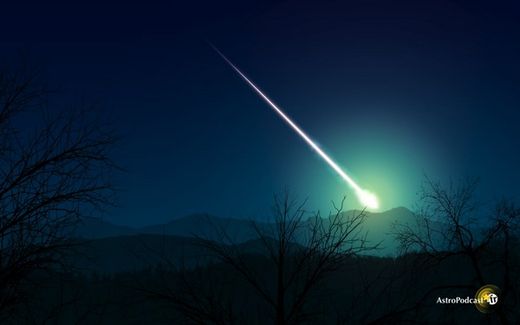
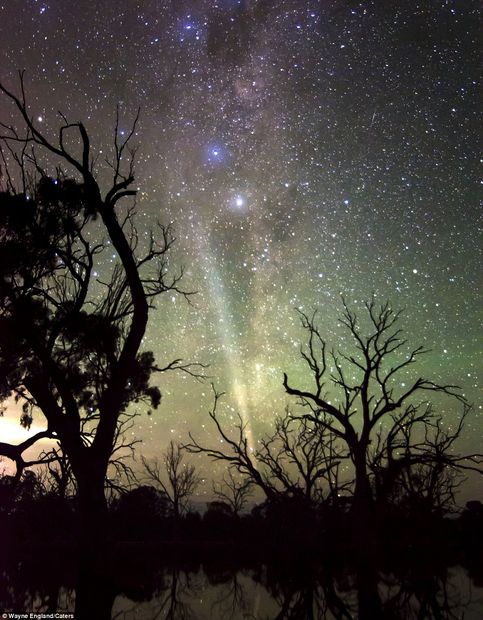

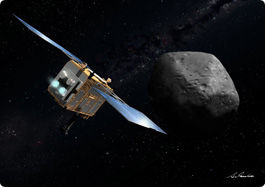

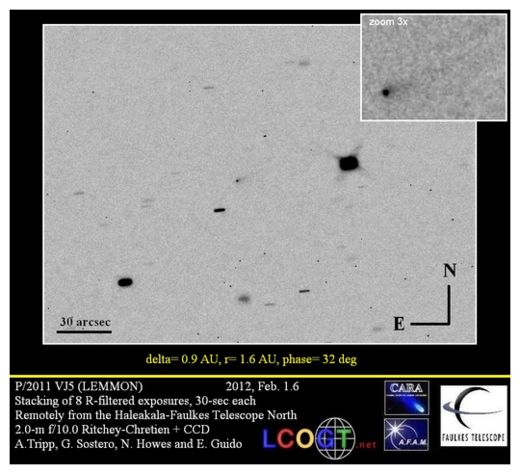
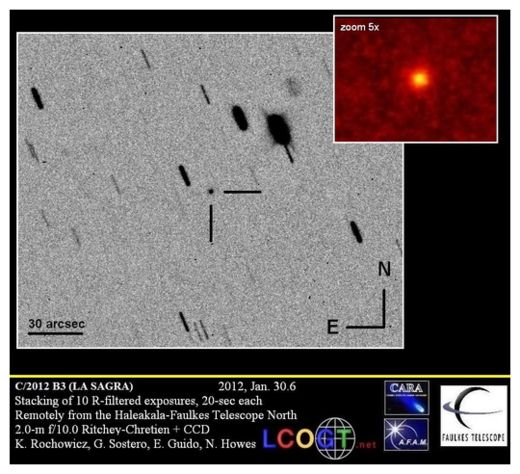
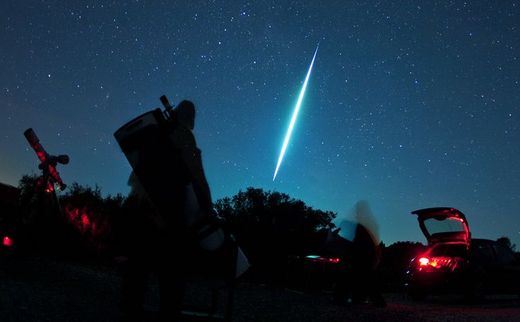
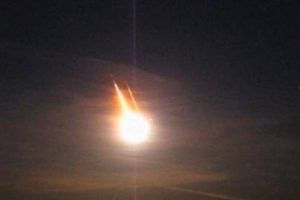
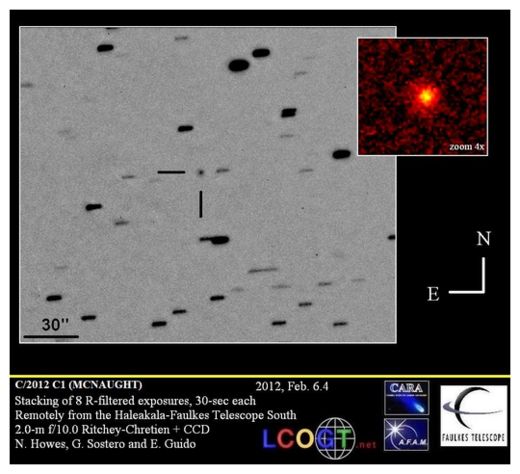
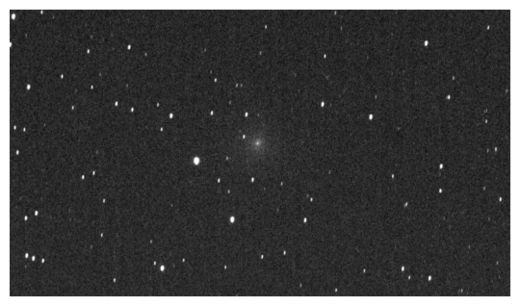
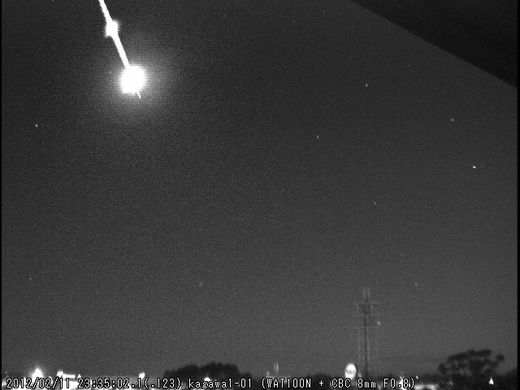
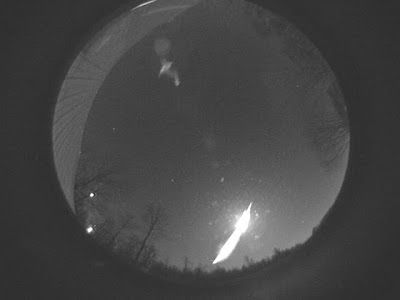
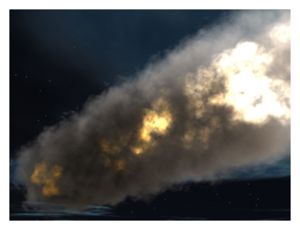
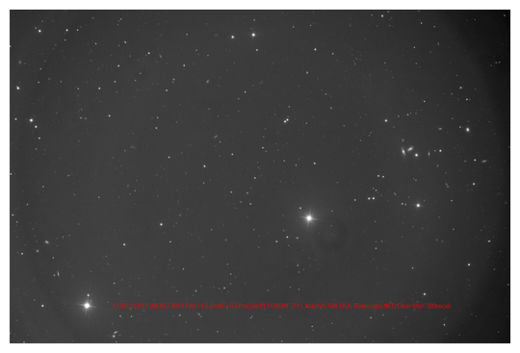



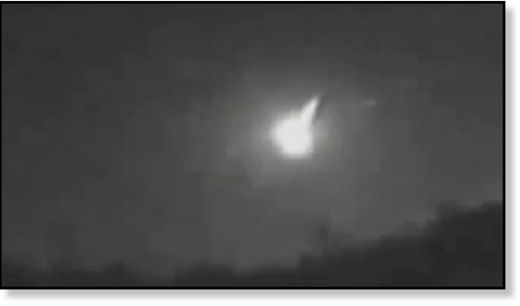
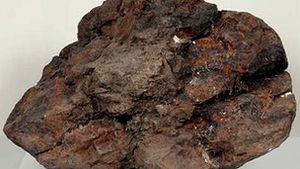
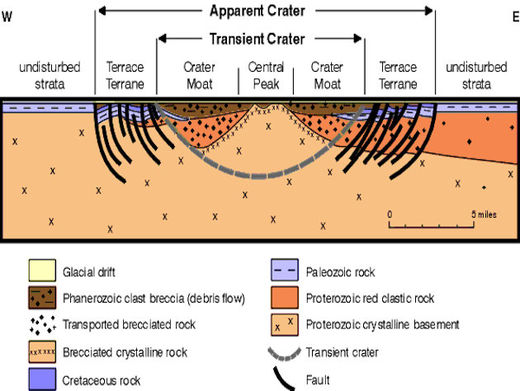
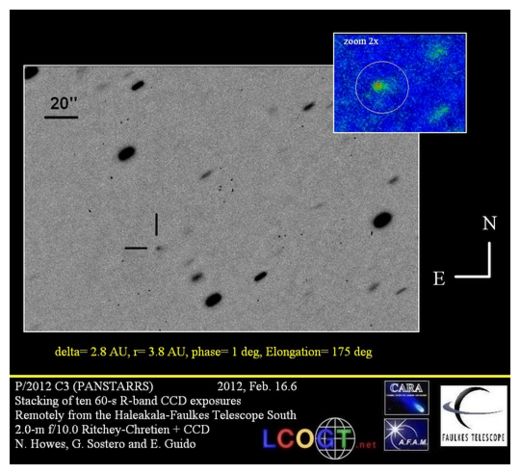



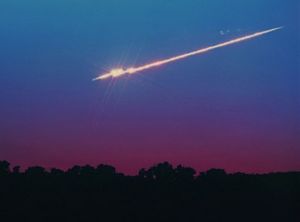
No comments:
Post a Comment